Plastic back plate for F2D engine
3D-printed plastic parts for FORA Combat engines
First published: 1/4 2014 - Last update: 23/4 2016 - By Henning Forbech
|
Welcome to this webpage on using 3D-printed parts in F2D Combat engines. Here you can follow my experiments and experience with this new technology. Enjoy! /Henning Forbech Index:
Plastic engine: Rebuild your combat engine with 3D-printed parts Combat engines have traditional been made from aluminium and steel. Maybe it is time to try new solutions. Some parts, as the back plate, can be made from plastic. The new 3D-printing technology has made it easy and cheap to make plastic parts from CAD-files. To test the technology on a combat engine a copy of the Fora back plate was printed in plastic by Shapeways in Holland. The back plate was made in polyamide (nylon) in a process called Selective Laser Sintering, SLS. |
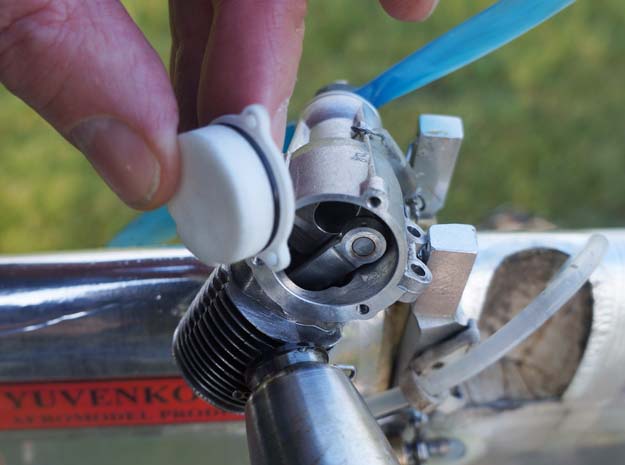
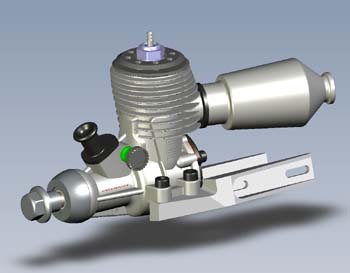
Background info: Selective Laser Sintering | |
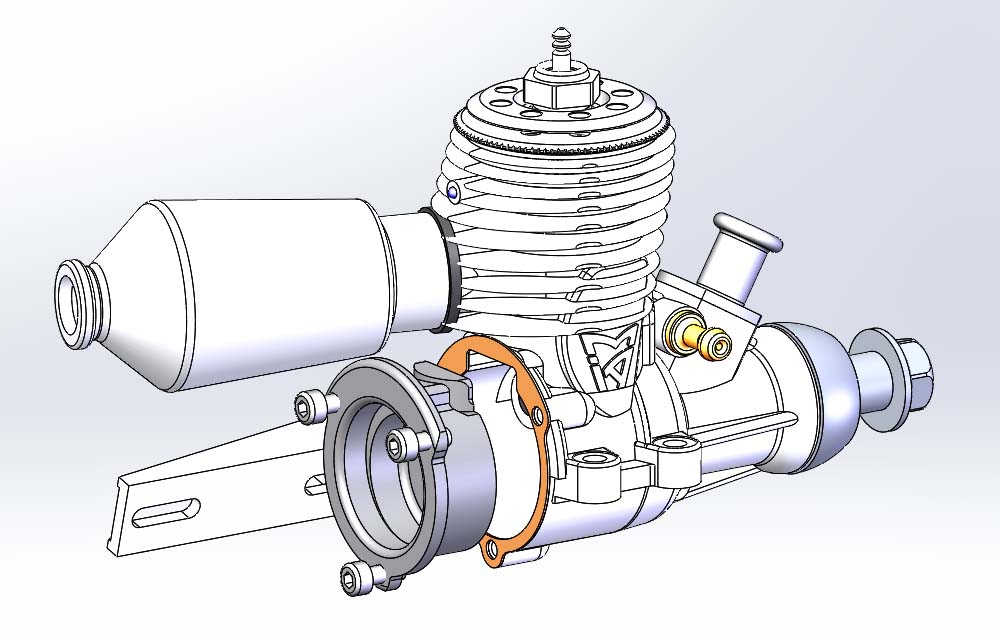 CAD-model of the back plate and the old Fora engine 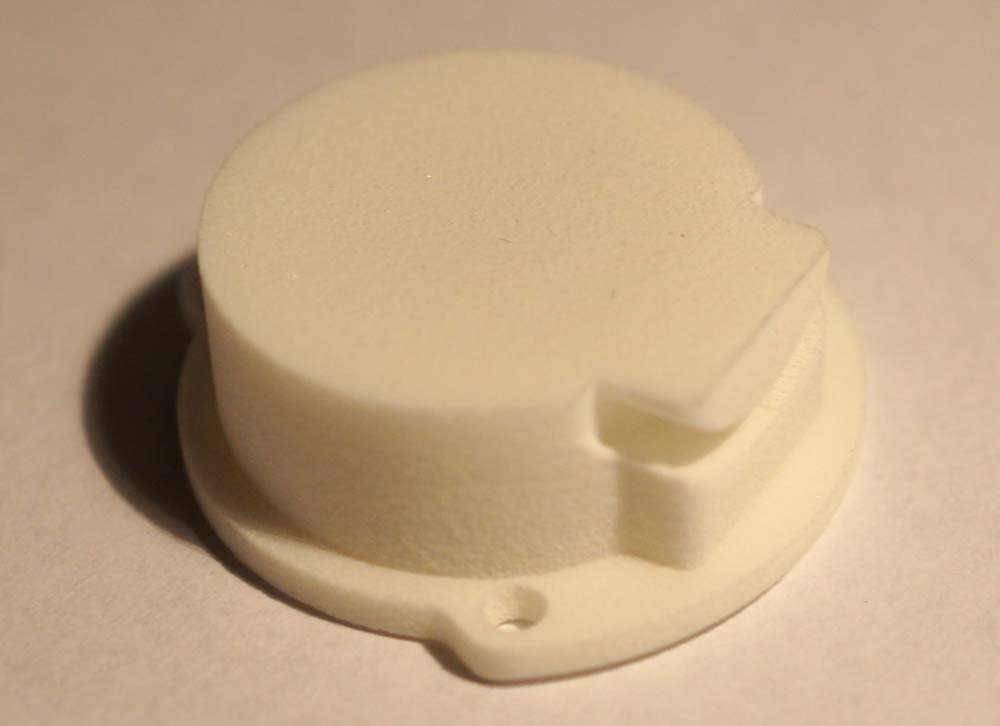 Back plate printed from the 3D cad-file 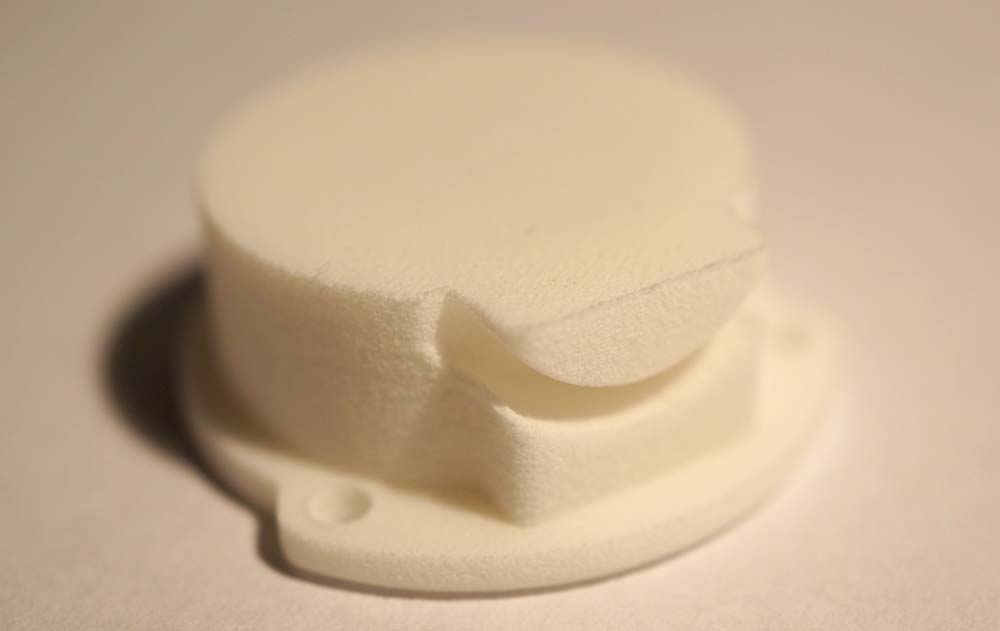 Close-up of the printed part |
||
|
In this first test the plastic part had the same size and wall thickness as the original aluminium back plate.
By replacing the aluminium by plastic the weight of the back plate was reduced from 6.4432 g to 2.4290 g. By replacing the original M 2.5 steel screws by nylon screws the total weight reduction was 4.8095 g The material for the back plate is polyamide 12. More info on the PA2200 from eos |
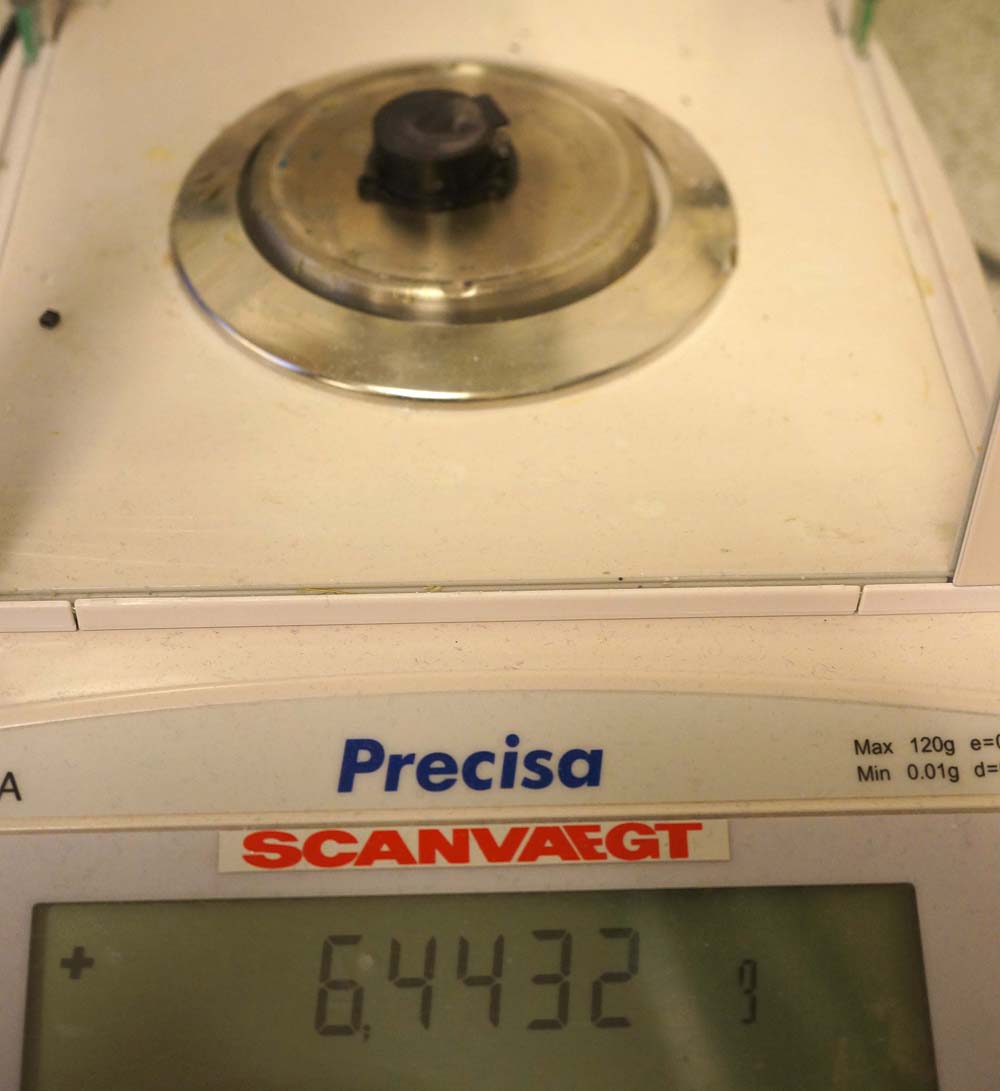
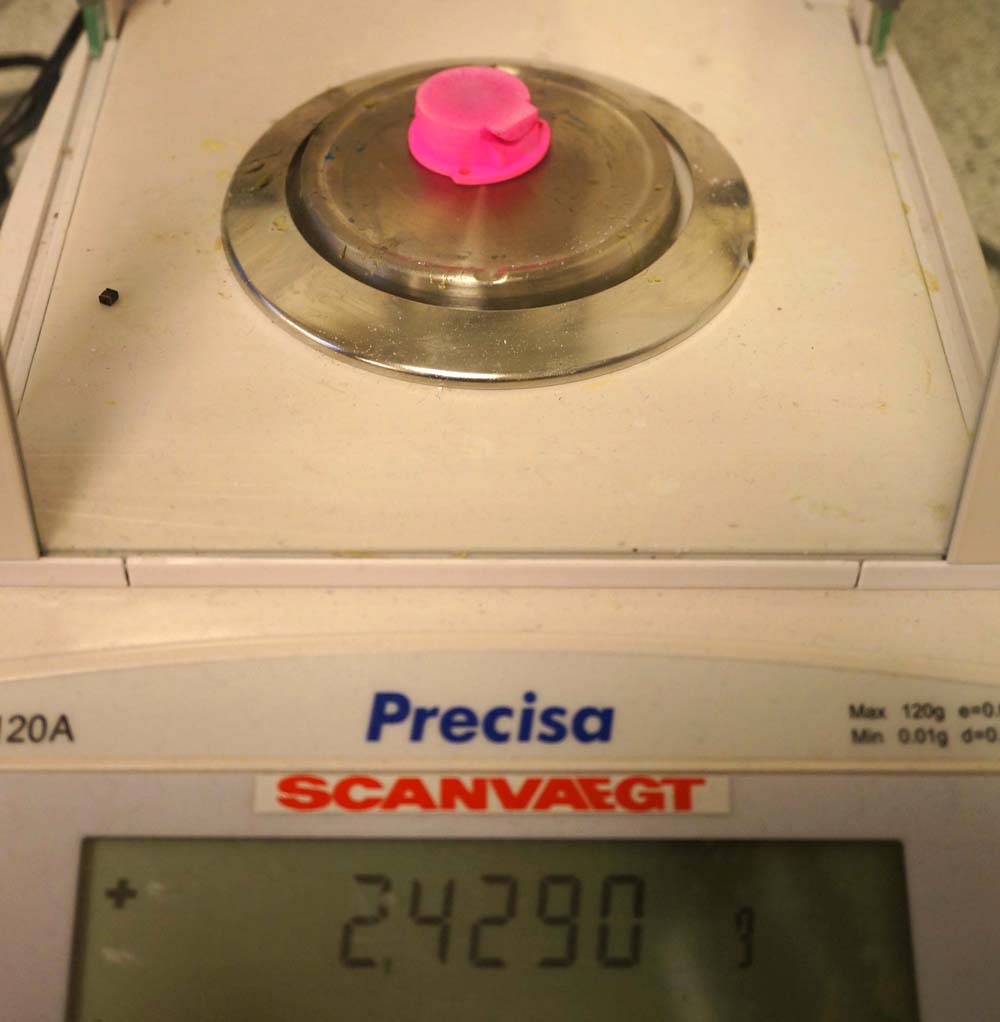
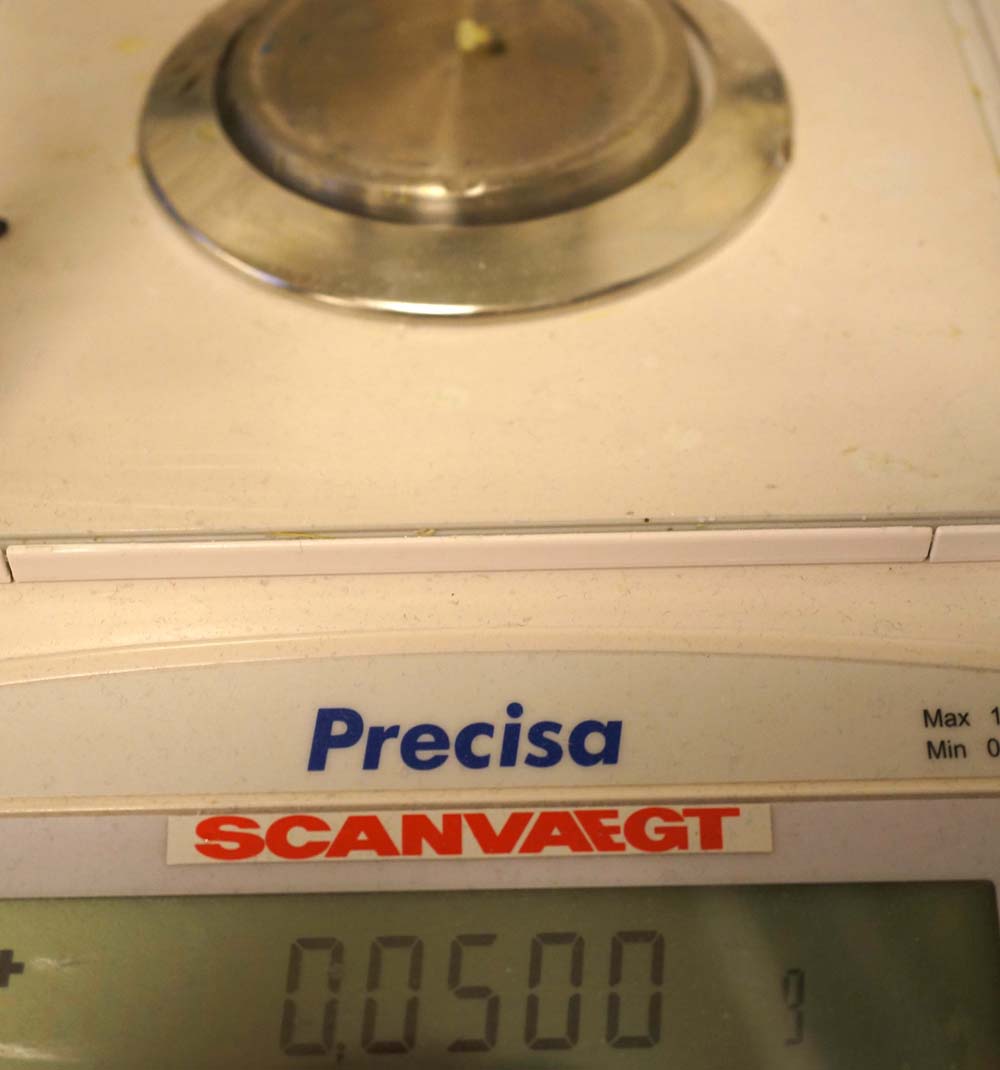 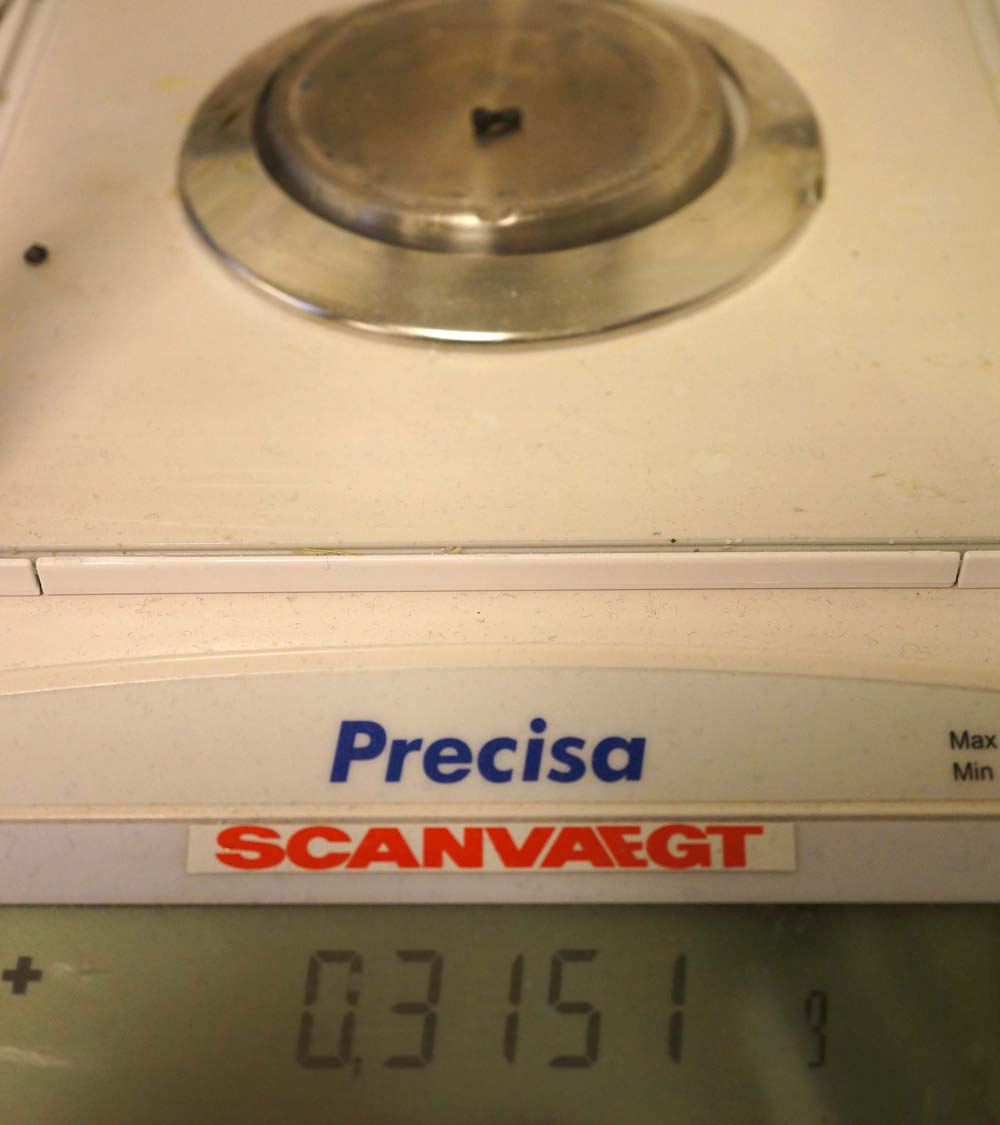
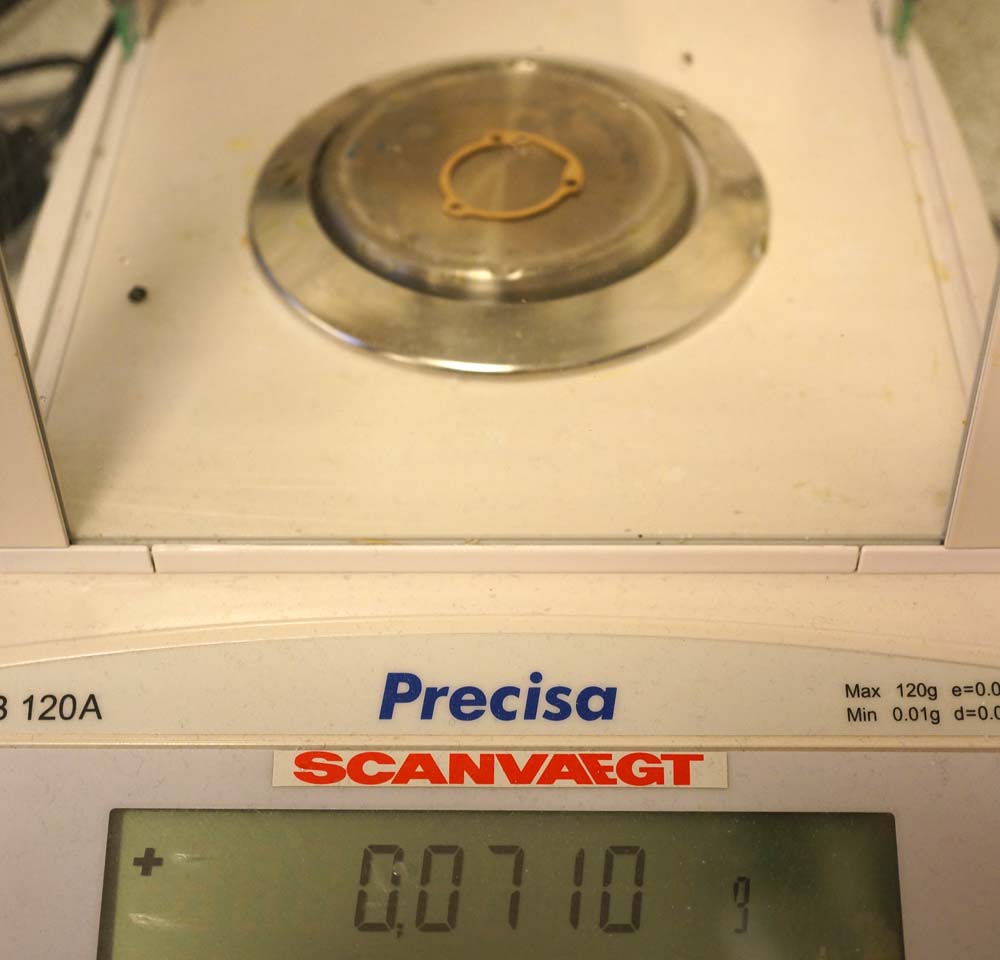
|
|
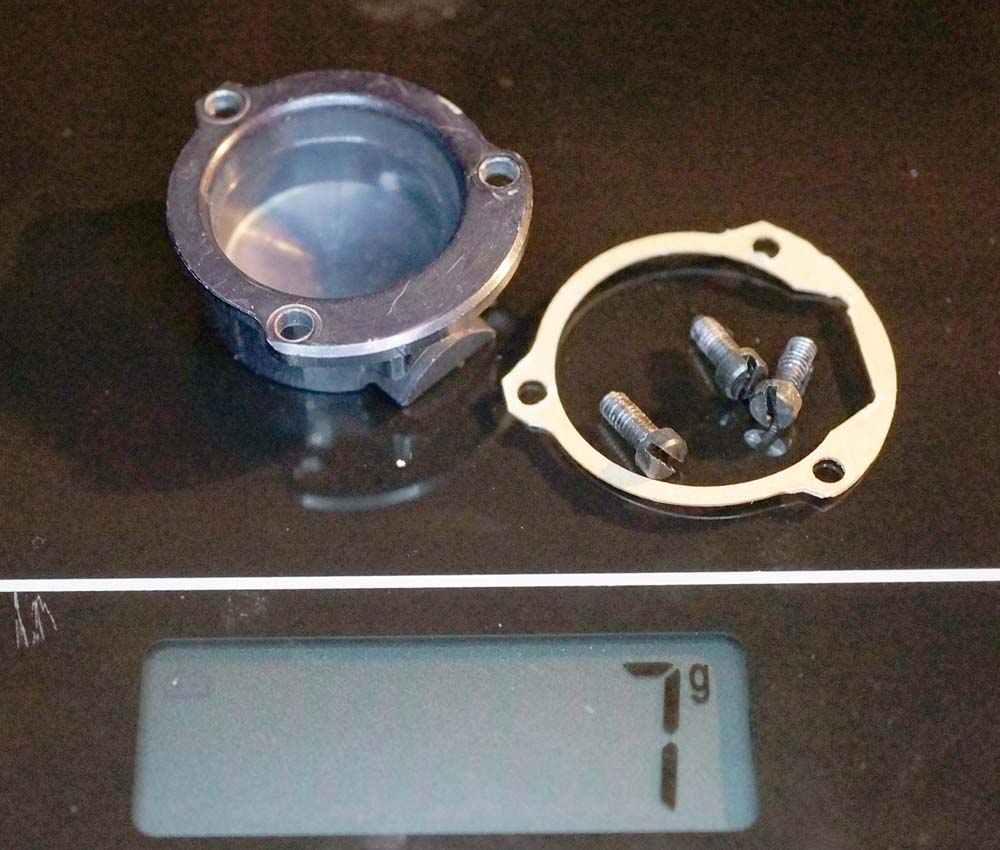 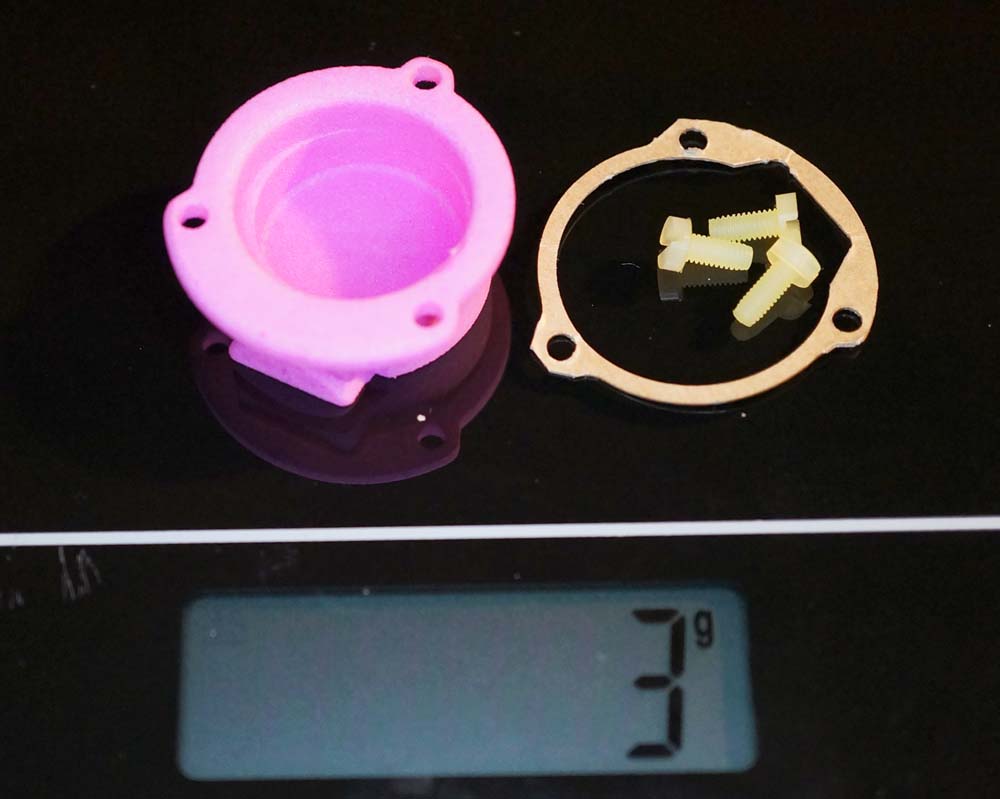 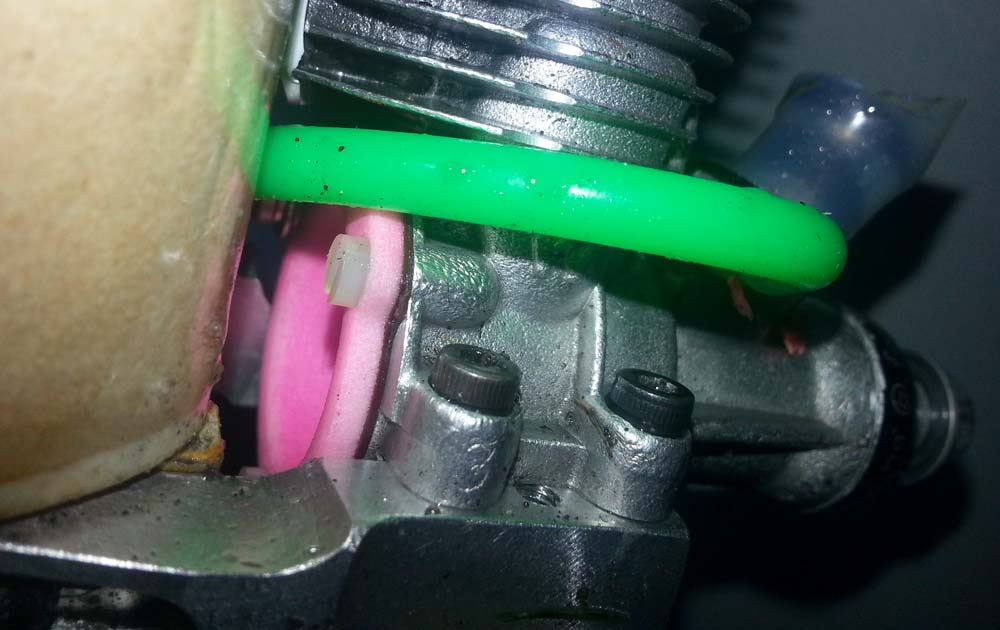 First test flight with the plastic back plate |
||
|
Second generation: After the successful test with a plastic version of the classic back plate for the old Fora two new light versions of the back plate was designed. Named "FORA-Classic Back Plate Sport" and "FORA-2012 Back Plate Sport" By reduce the wall thickness and optimizing the shape of the back plate with ribs it was possible to reduce the weight to only 1.4 g. If mounted with nylon screws the engine weight could be reduced by 5.8 g ! Probably the simplest and fastest way to reduce the take-off weight of the model. These two back plates was designed in SolidWorks and printed in nylon by Shapeways. The cost of the lightweight back plates was less than 4 euro each. |
Selective Laser Sintering Video on YouTube  |
|
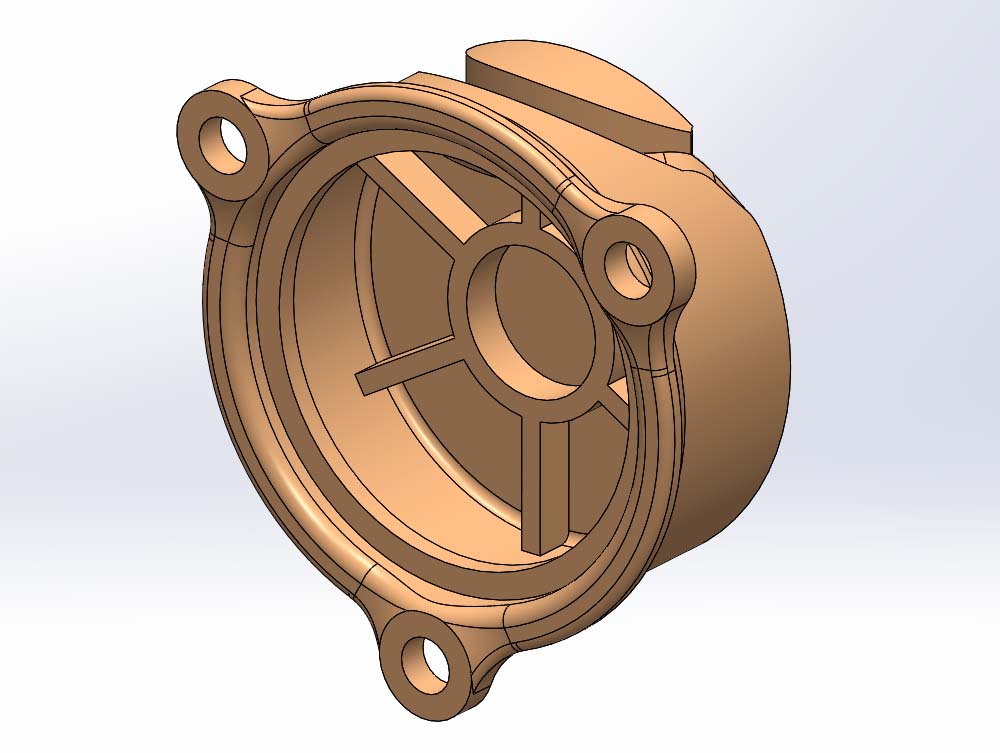 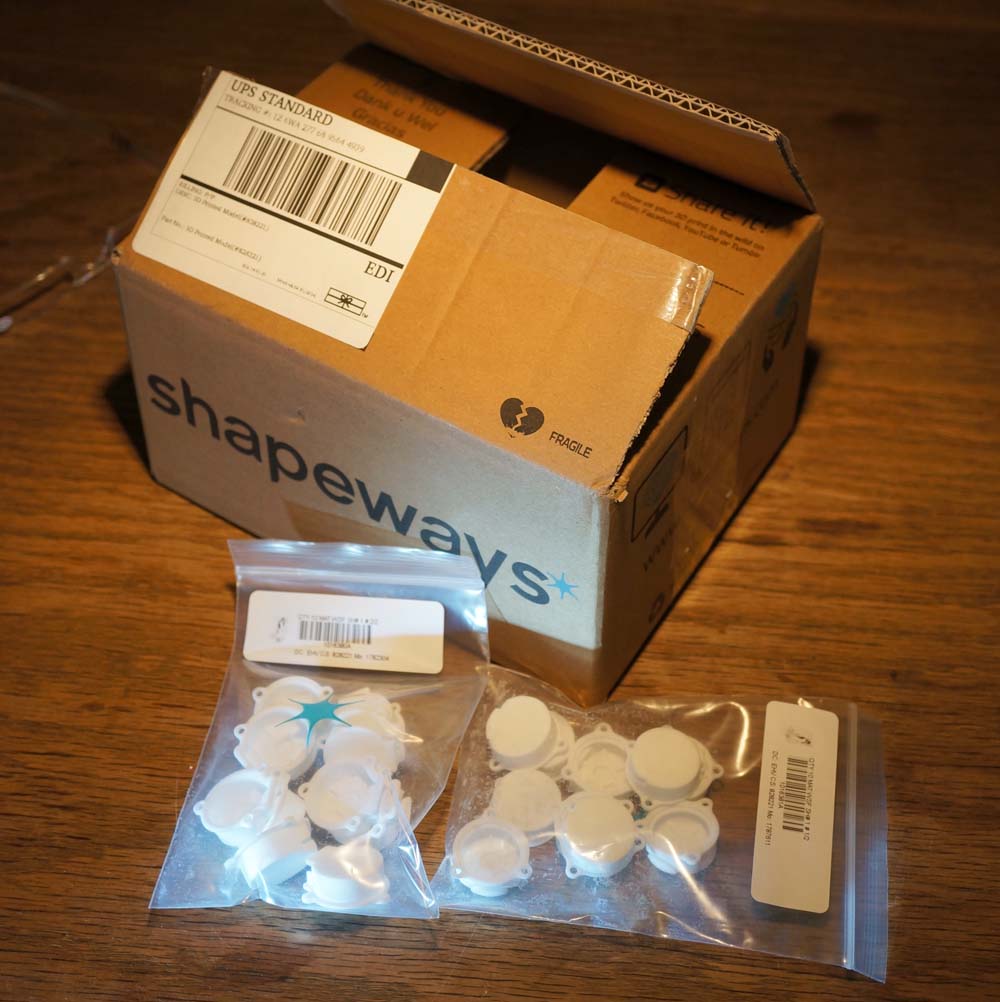 The back plates arrive from the manufacture in Holland 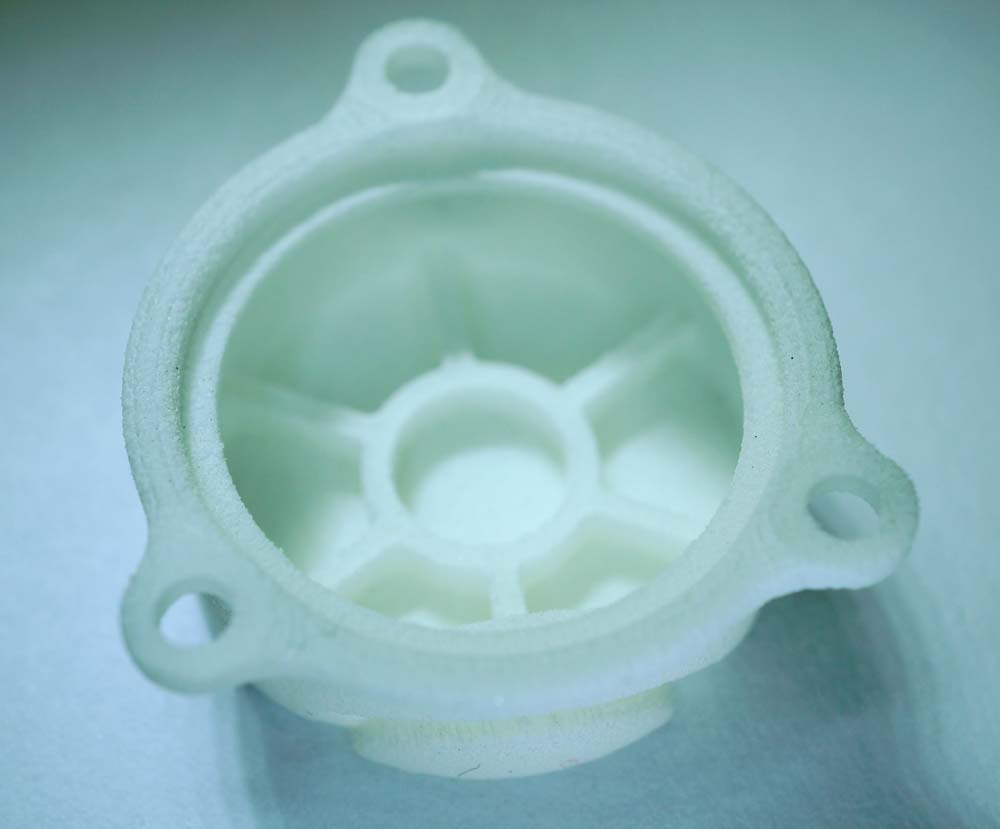 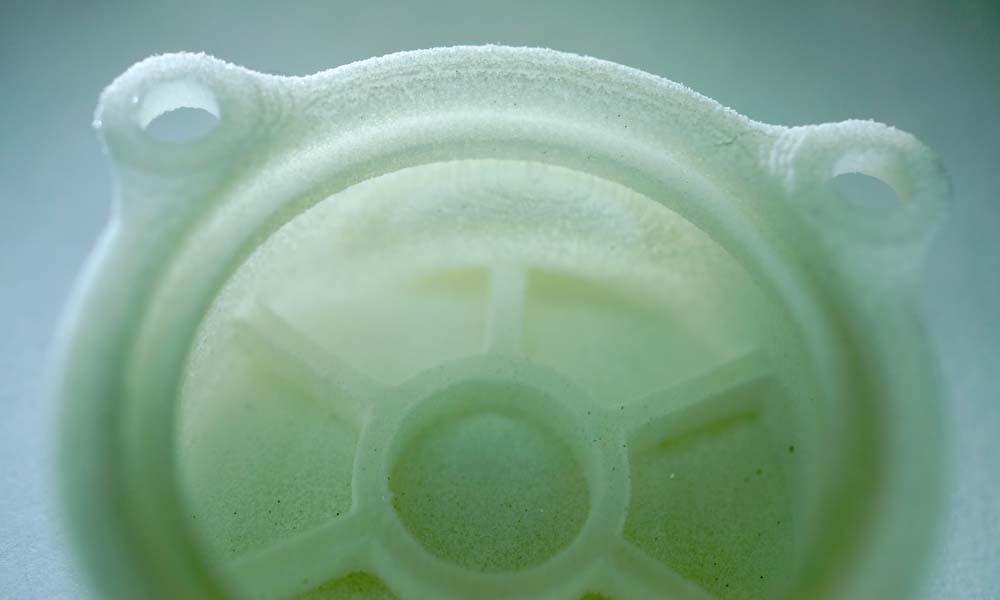 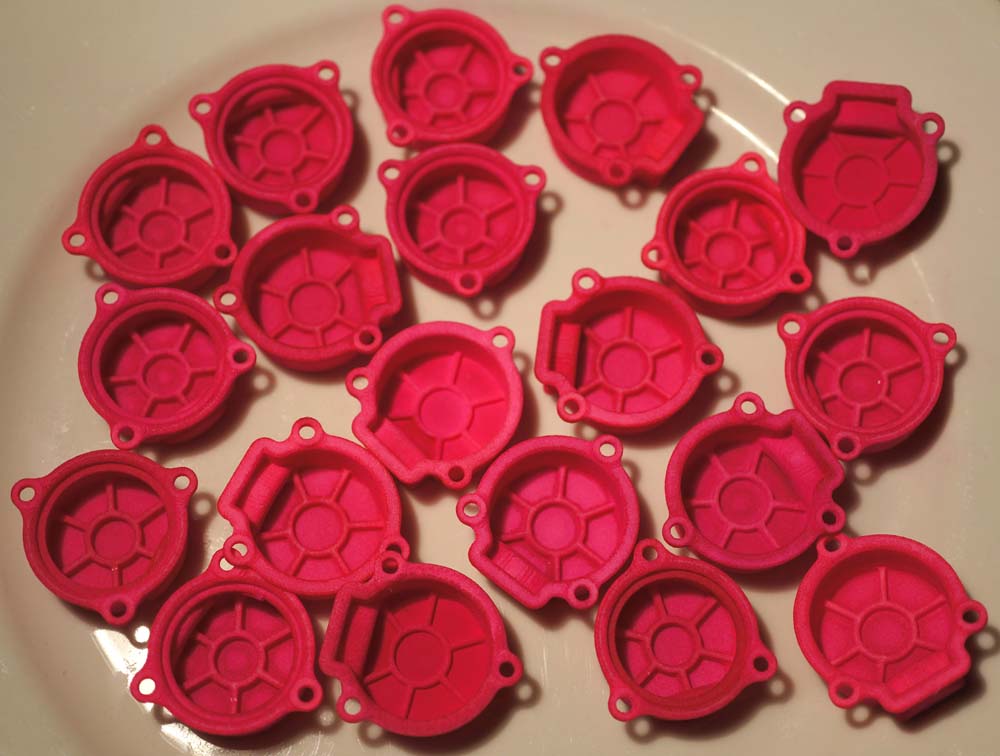 Adding some color to make the plastic engine stand out from the rest 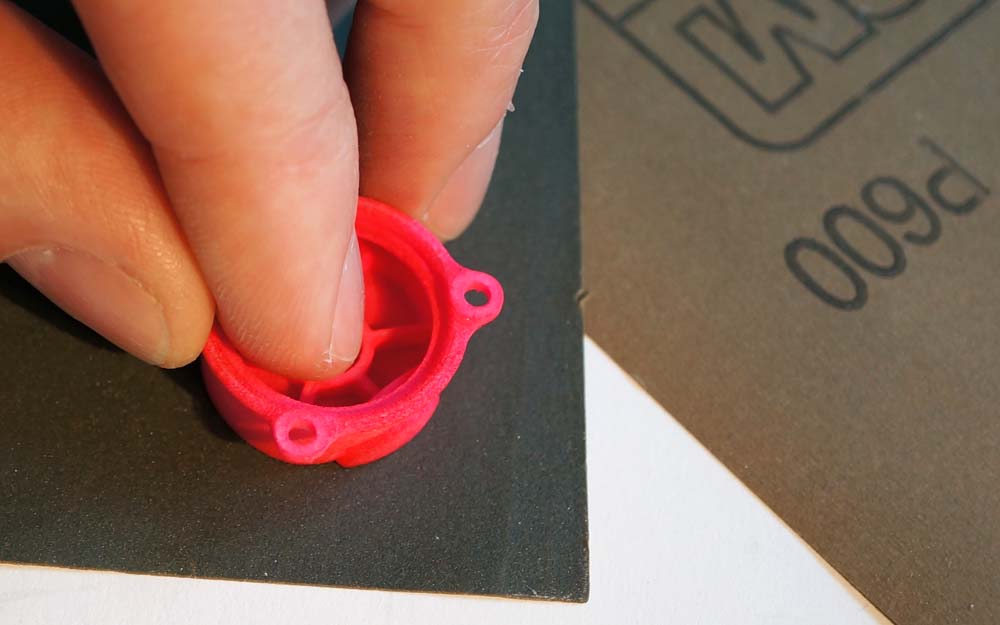 To give the back plate a smooth surface towards the conrod the back plate must be sanded with a fine sandpaper. 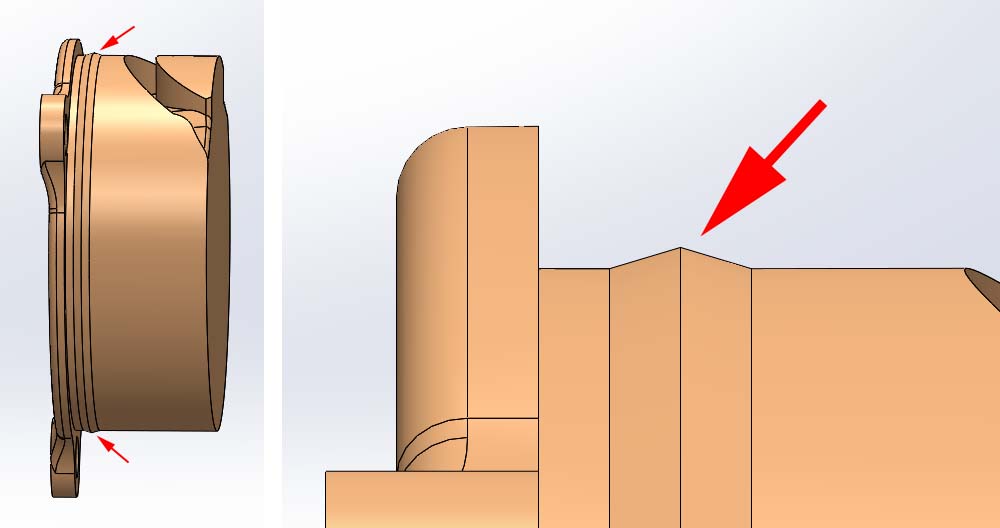 The "FORA-2012 Back Plate Sport" is designed with an build in bump for sealing the back plate inside the cranckcase 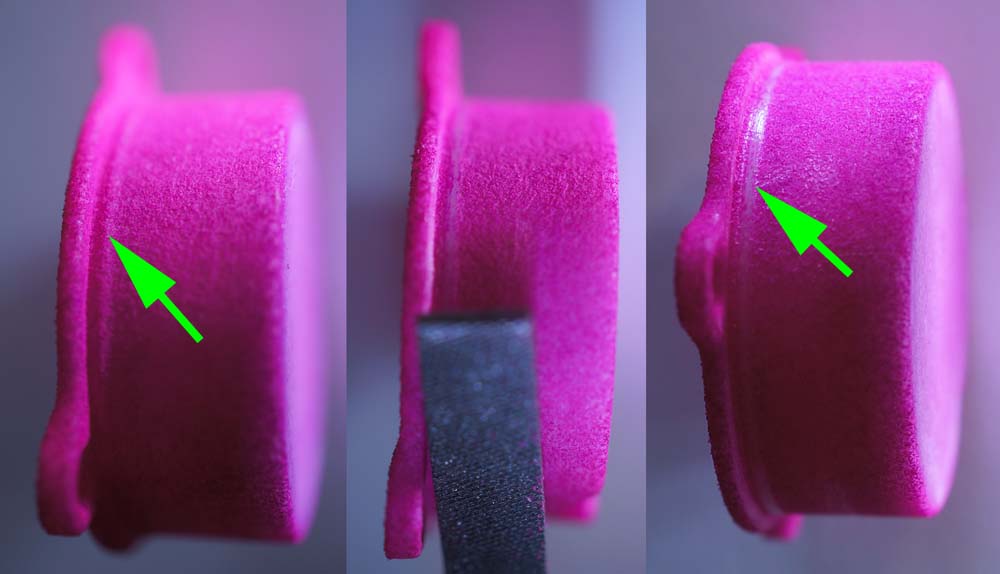 The sealing bump must be filed down to give a smooth paking surface 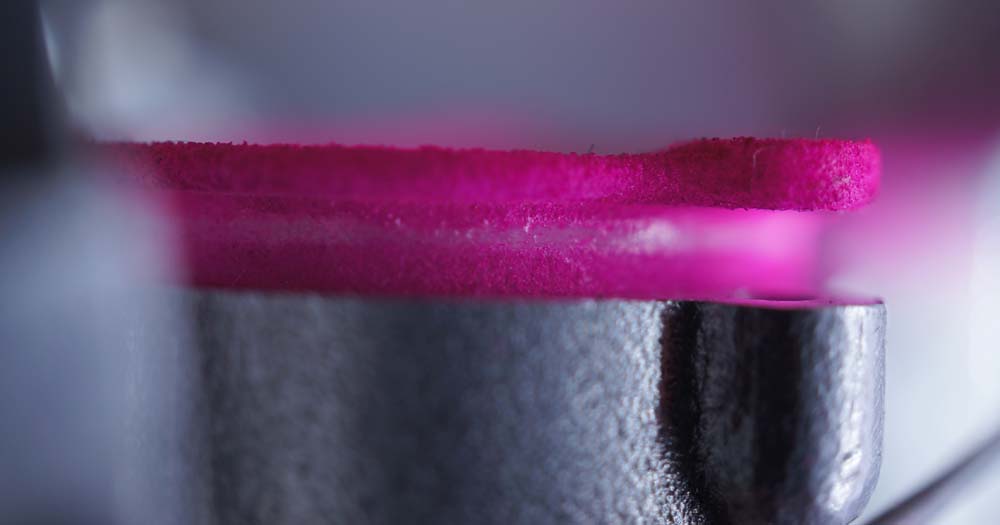 This back plate (FORA-2012 Sport) can be used without the paper gasket. Make sure you have some distance (0,2 mm) between the connecting rod and the back plate. 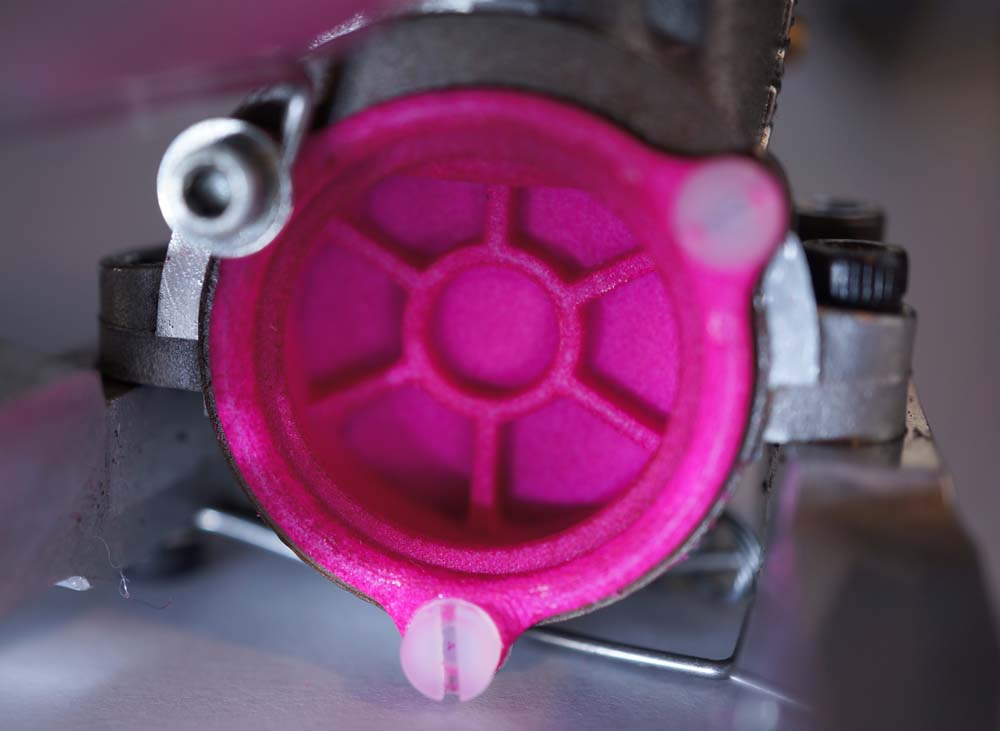 The nylon back plate ready for flying. A paper gasket is used on this engine 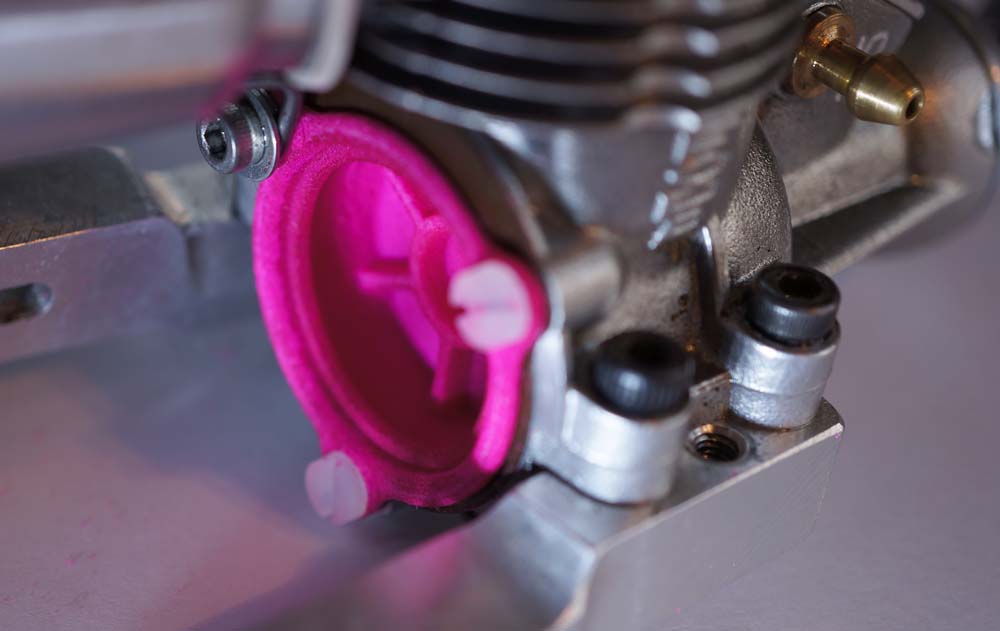 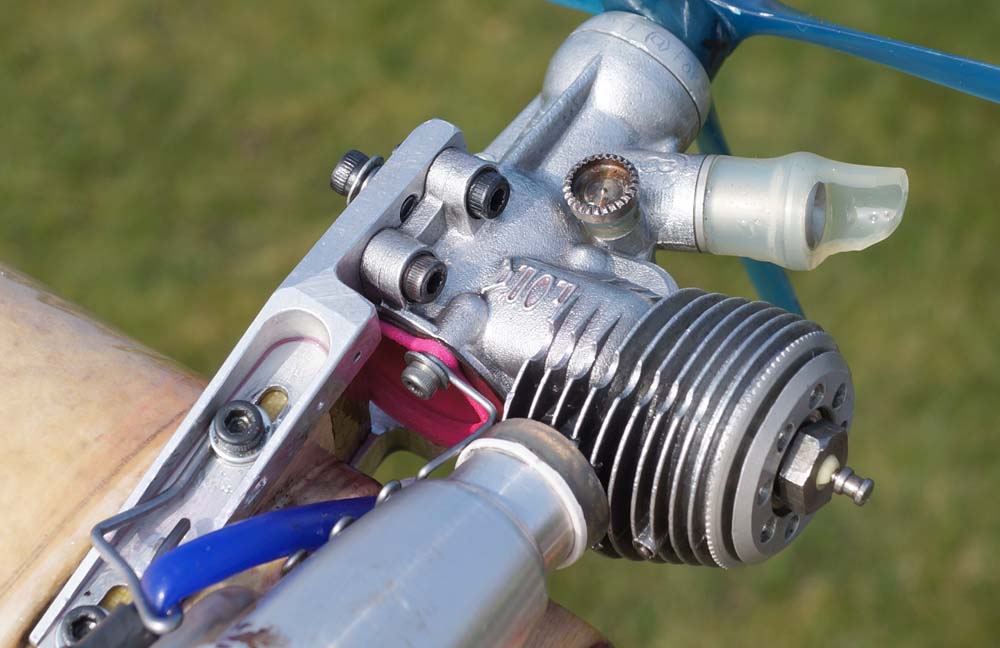 At the flying test 30/3 2014 in Herning, Denmark |
||
|
Plastic back plates are probably the simplest and fastest way to reduce the take-off weight of your model.
3D print can be used for many other parts on a combat model. Back plates are just a start! Welcome to the future! First published: April Fools' Day 2014 by Henning Forbech BTW: Did you notes the propeller in the last picture? More info here |
You can buy the back plates from Shapeways "FORA-2012 Back Plate Sport" "FORA-Classic Back Plate Sport" "FORA-Classic Back Plate" WARNING: Using these plastic back plates on your engines will be at your one risk More 3D printed equipment for F2D |
|
|
2015 Update: Plastic back plate with O-ring: Last update: April Fools' Day 2015 - By Henning Forbech |
||
|
The plastic back plate have now been updated with a O-ring sealing.
To improve the sealing of the backplate in the housing an O-ring have now replaced the small sealing bump. This change has also made it possible to remove the old paper sealing This new version of the back plate was designed for the FORA 2012. You are welcome to comment on this back plate at the Russian FAS forum |
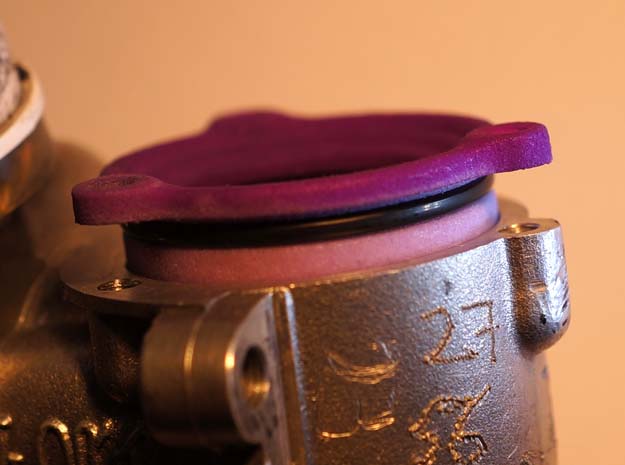
|
|
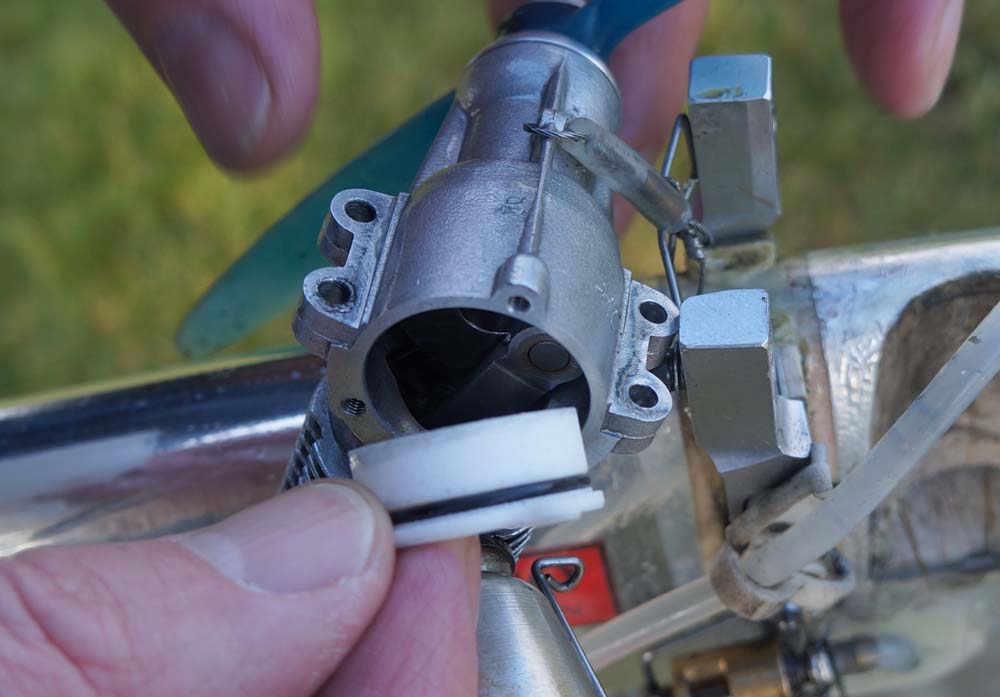 First test flight with the new O-ring sealing 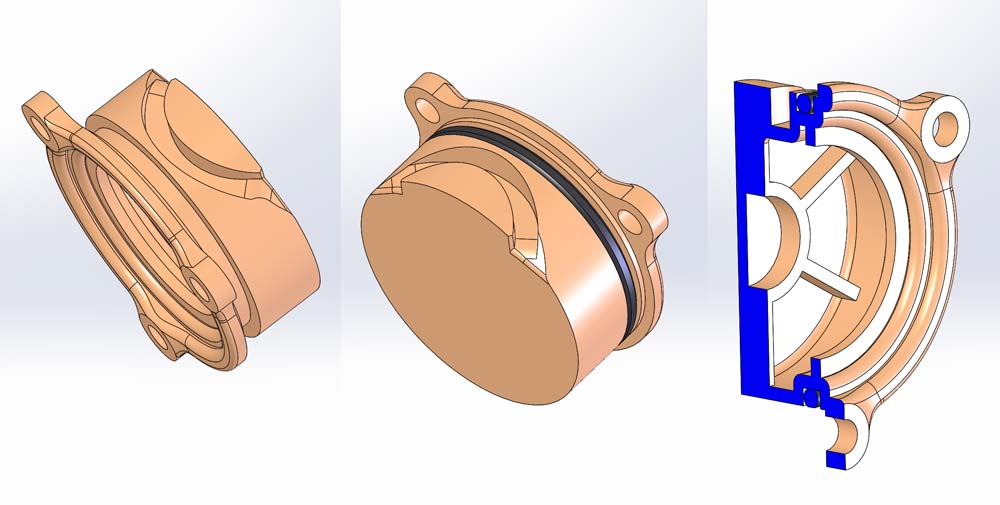 CAD model of the back plate with the new O-ring 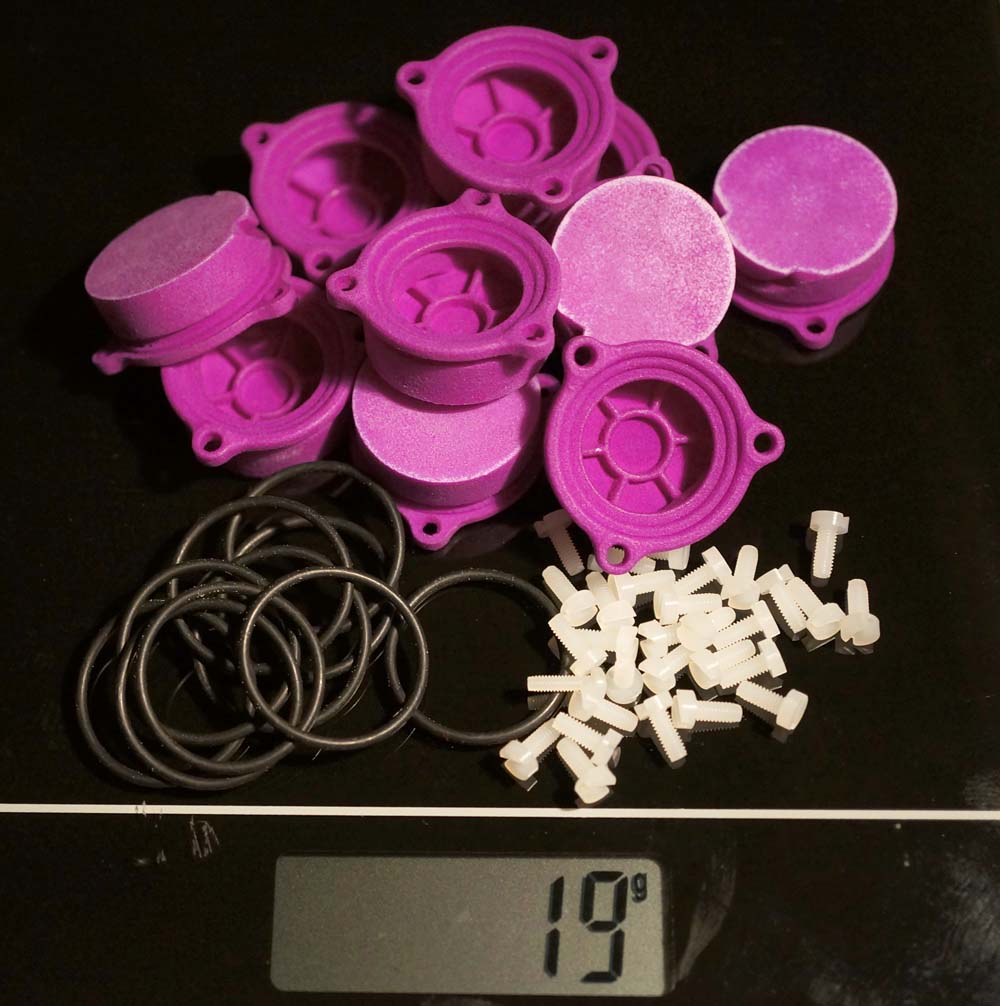 10 back plates with O-rings and plastic screws. You save more than 5.5 g by replacing the original aluminium back plate with the new plastic version 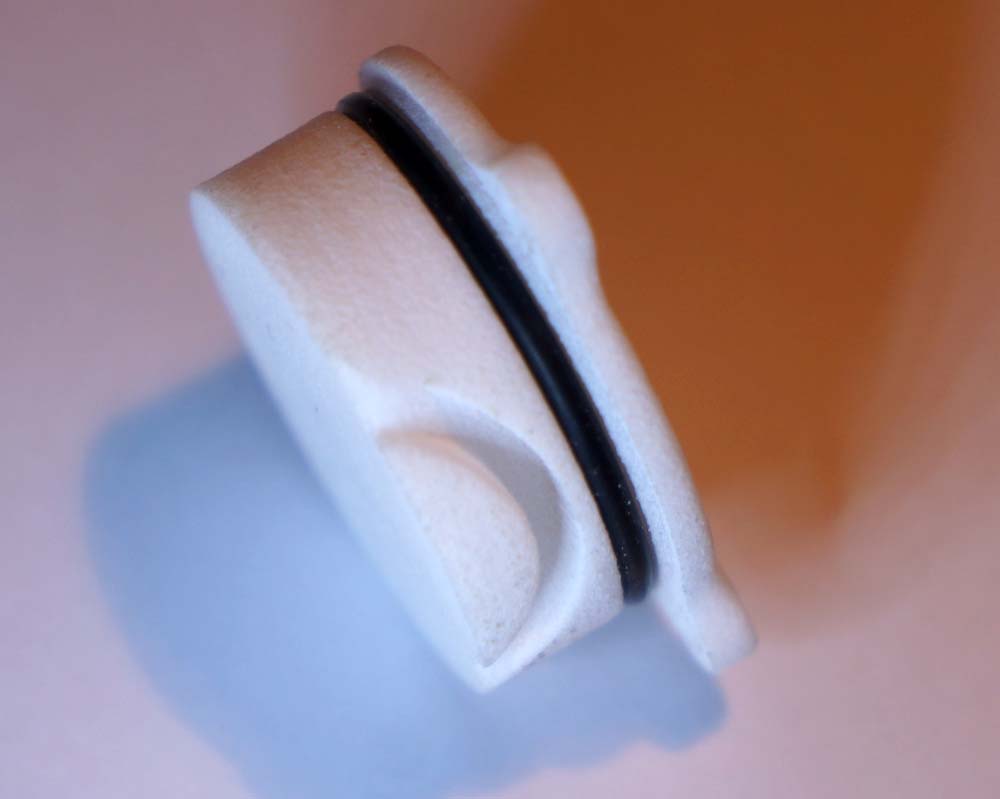 Back plate with O-ring 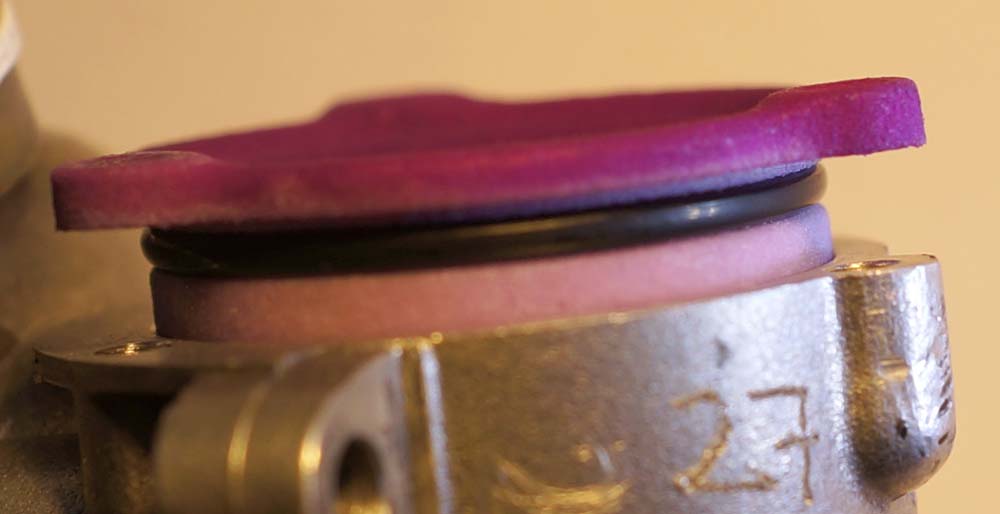 Back plate with O-ring beeing insertet to the engine. No paper gasket! 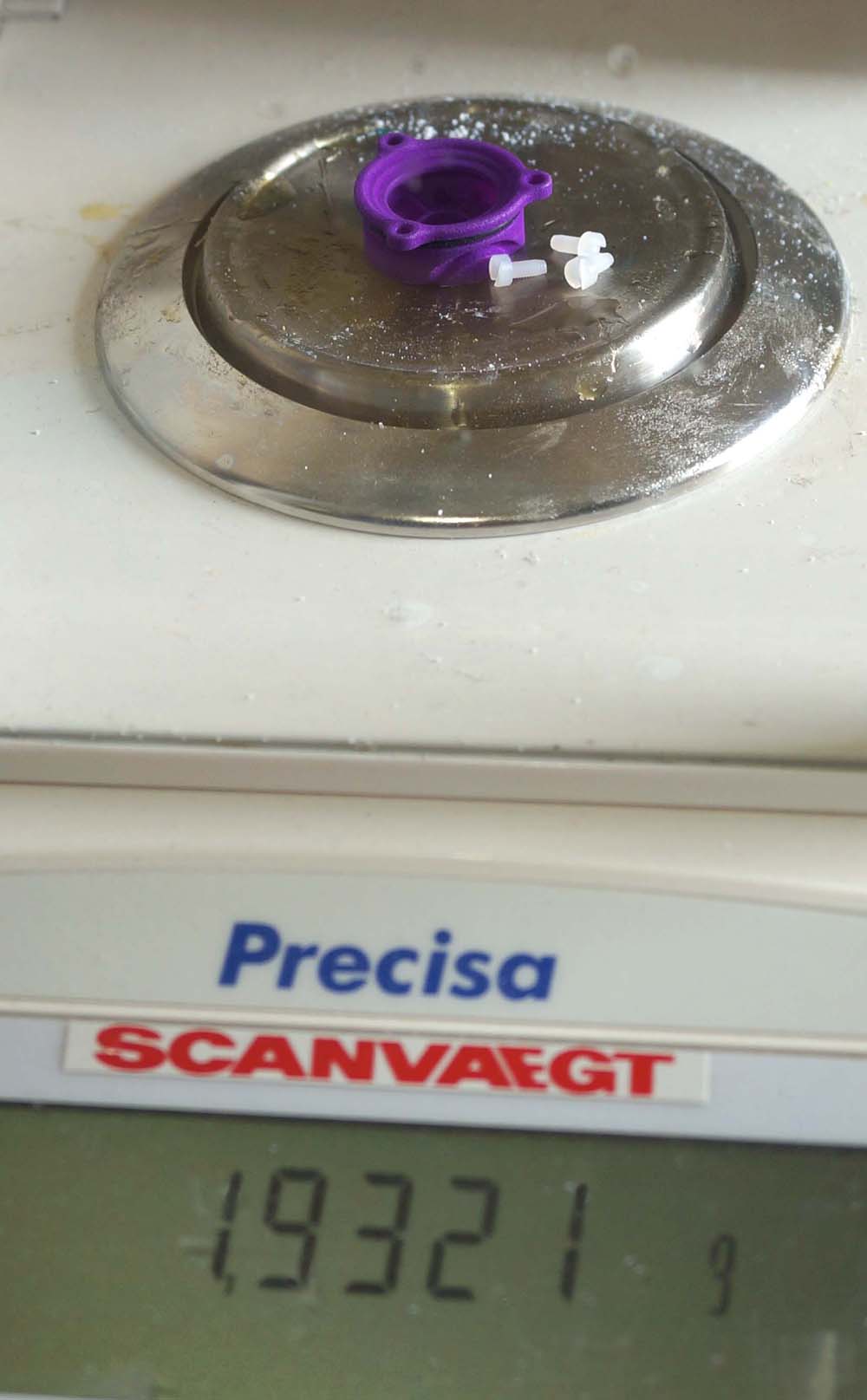 The plastic back plate on the precision weight: 1.9321 g Original Fora back plate: 7.4595 g Aluminium back plate: 6.4432 g - Paper gasket: 0.0710 g - Steel screw: 0.3151 g Original weight: 6.4432 + 0.0710 + 3 x 0.3151 = 7.4595 g Weight reduction: 5.5274 g 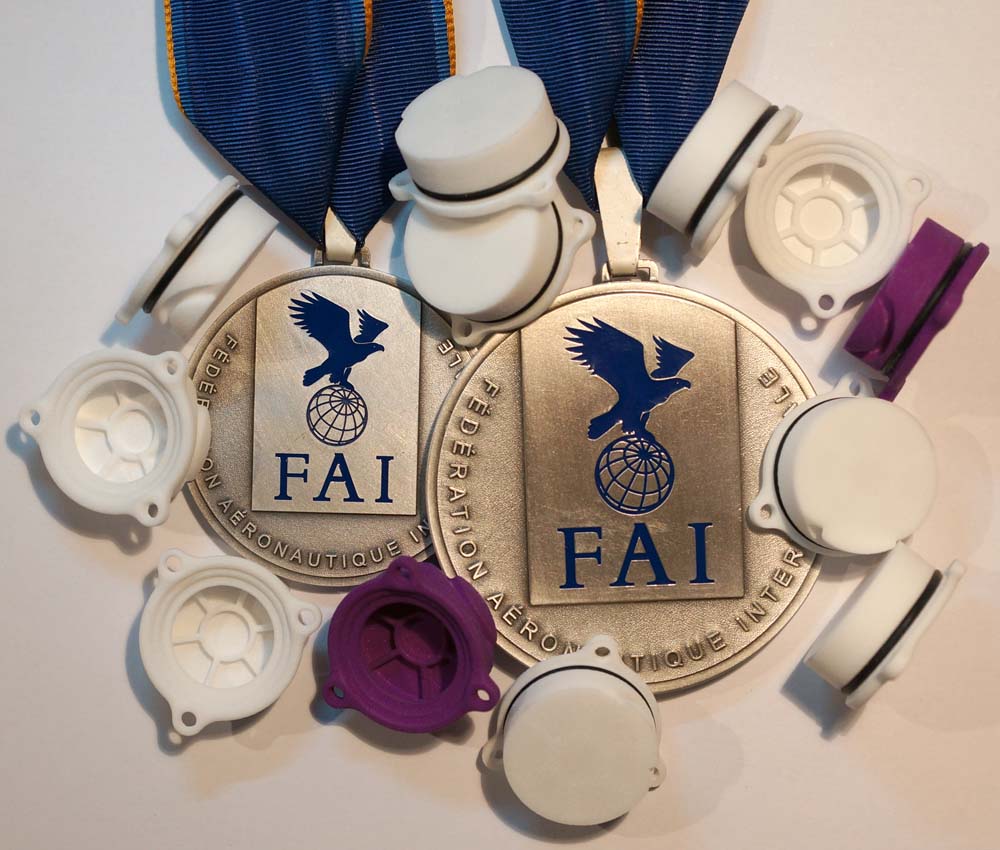 After one year with 3D-printed engine parts: Plastic back plates produces good results! |
||
| Make your own design: | ||
|
The 3D cad-file (STL) is available from Shapeways. You can also download the cad-files (SolidWorks 2013) from this site If you want to change this back plate or design other parts for 3D printing you can use the online CAD program Onshape. 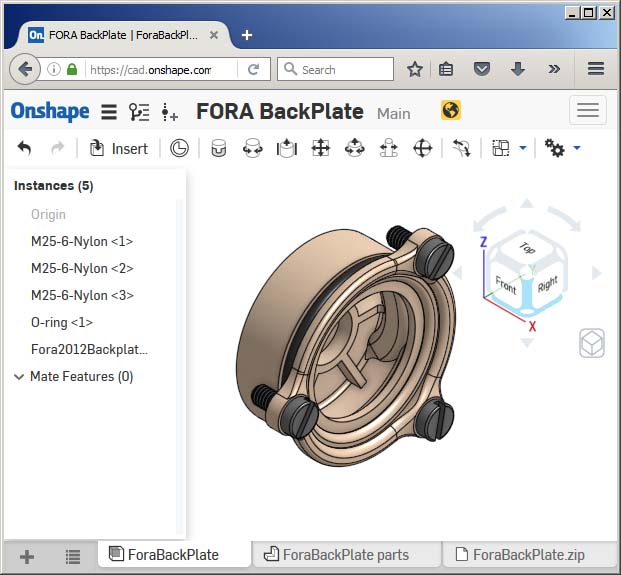
|
Download CAD-files (SolidWorks 2013) 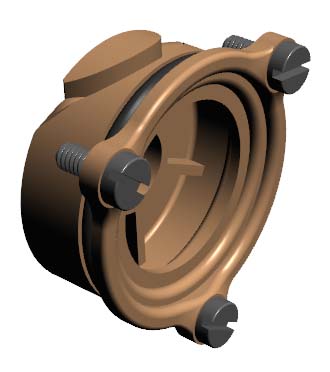
3D pdf The plastic back plate was designed for a 1.5 x 20 O-ring You can get the plastic screws here: RS Components: 527-943 Free online CAD program: Onshape |
|
|
|
||
|
Tool for removing plastic back plates: First published: April Fools' Day 2016 - By Henning Forbech A 3D-printed back plate with an O-ring sealing can be difficult to pull out of the crankcase. But now the help is near. Here is the new tool to remove the back plate. This tool is also 3D-printed and is designed to fit into the plastic back plate When you press the tool on the sides it will be round and fit into the opening in the back plate. When you press the top and bottom the tool will hook into the back plate and it is easy to pull out the back plate 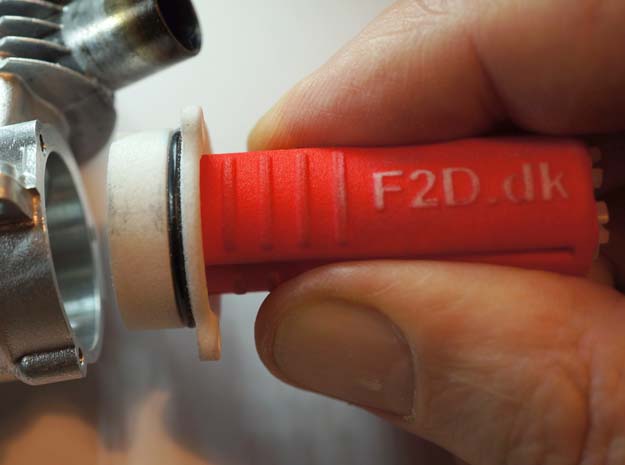
You will find more 3D printed equipment on this web page: Tools for F2D Combat engines |
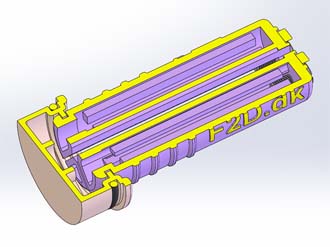 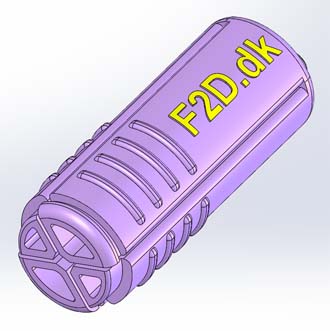 You can get this tool from Shapeways |
|
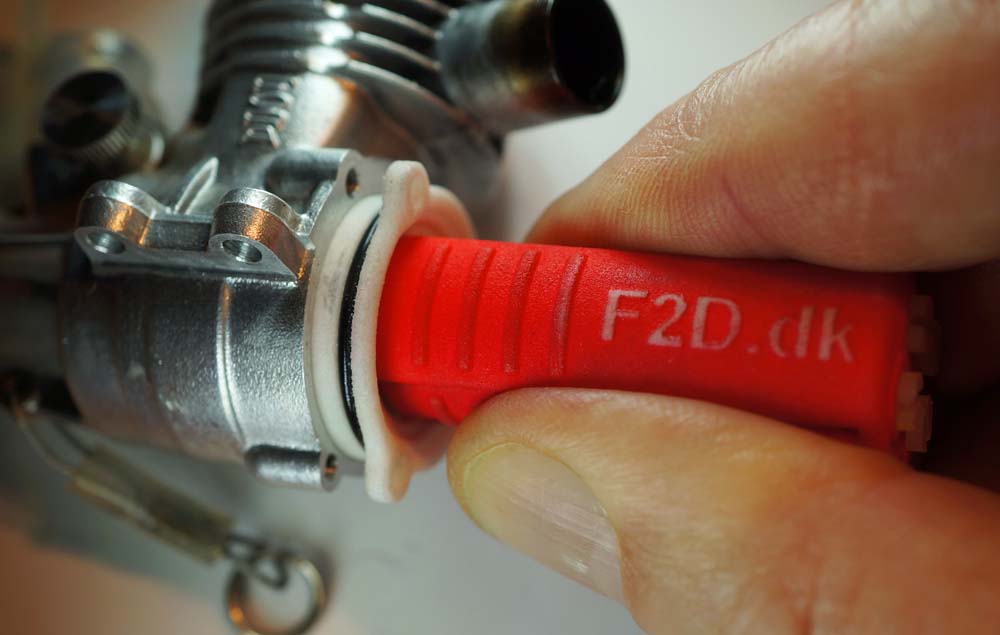 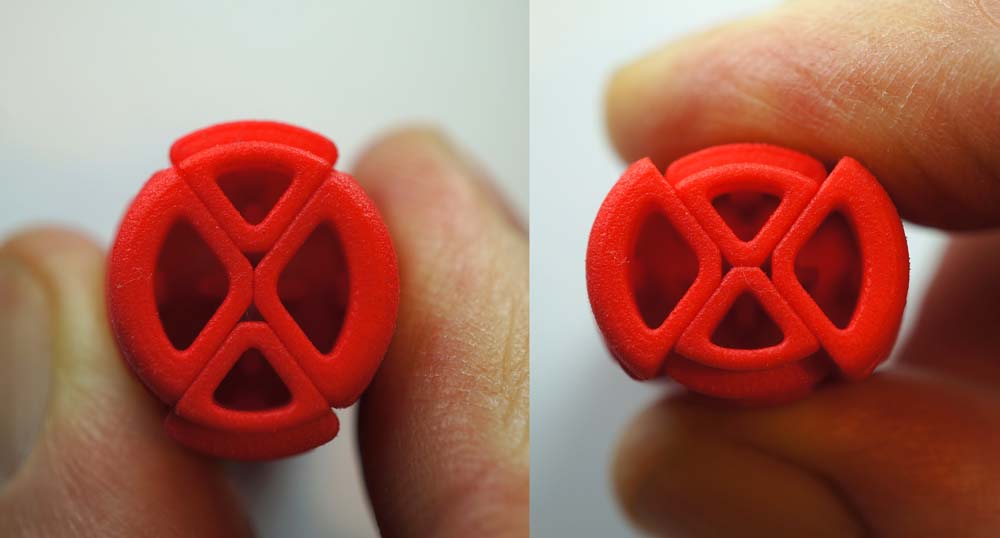 |
||
|
Temperature load on the back plate: First published: April Fools' Day 2016 - By Henning Forbech Some pilots are not sure if a plastic back plate will be able to stand the temperature in a combat engine. On a running combat engine the lower part of the crankcase and the back plate is almost the same temperature as the air temperature The temperature inside the crankshaft is actually lower than the air temperature The lower part of the engine is cooled down by the evaporation of the fuel that is feed into the engine A combat engine consume about 0.33 ml of fuel each second. It takes about 227 watt to evaporate this flow of methanol and nitromethane. It is this cooling effect from evaporating the fuel that keeps the lower part of the engine cold when it is running. The upper parts of the engine are getting hot when the engine is running. When the engine stops the heat from the top of the engine will spread down to the lower part of the engine. It is only in this situation that the lower part of the crankcase and the back plate will get warm It is very easy to check the actual temperature of the lower part of an running engine. It can be done without any fancy instruments or high tech equipment. Just press your finger against the bottom of the crankcase and feel the temperature! The high tech approach to measure the temperature of a running combat engine is to film it with a thermal camera. Last year André Bertelsen and Mark Rudner did just that! Enjoy the video clip here: |
Cooling effect from the fuel: Fuel flow 0.33 ml/sec. 10% Nitromethane Volume flow: (0.1x0.33) 0.233 ml/sek Density, Nitromethane: 1.1371 g/ml Mass flow: (0.033x1.1371) 0.0379 g/sek Evaporating energy: Evaporating power consumption: 38.3 kJ/mol and 61.04 g/mol (38,300/61.04) 627.46 J/g (0.0379x627.46) 23.78 J/sek 23.8 Watt 70% Methanol Volume flow: (0.7x0.33) 0.233 ml/sek Density, Methanol: 0.792 g/ml Mass flow: (0.233x0.792) 0.185 g/sek Evaporating energy: 35.278 kJ/mol and 32.04 g/mol (35,278/32.04) 1,101 J/g (0.185x1,101) 203.47 J/sek 203.5 Watt Fuel Evaporating power consumption: (23.78+203.47) 227.25 J/sek 227 Watt |
|
|
|
||
|
Is plastic dangerous to the engine? First published: April Fools' Day 2016 - By Henning Forbech Some pilots are afraid that the plastic backing plates may be hazardous for their engines. They fear that small parts of plastic may damage the engine To test if the plastic back plate represents a danger to engines I made the ultimate test in the spring 2015. I brought two new Fora 2015 (AKM style) and sat them up with plastic back plates, titanium screws and light weight engine mounts. At the World Cup in Aalborg I had a mid-air collision and one of my new super engines broke the crankshaft in the air. The engine lost the propeller but kept running at very high speed for a couple of seconds |
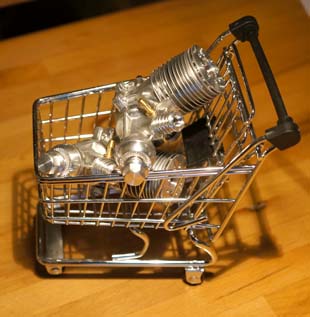 Two new "Super" Fora 2015 (AKM type) was purchased for this test. |
|
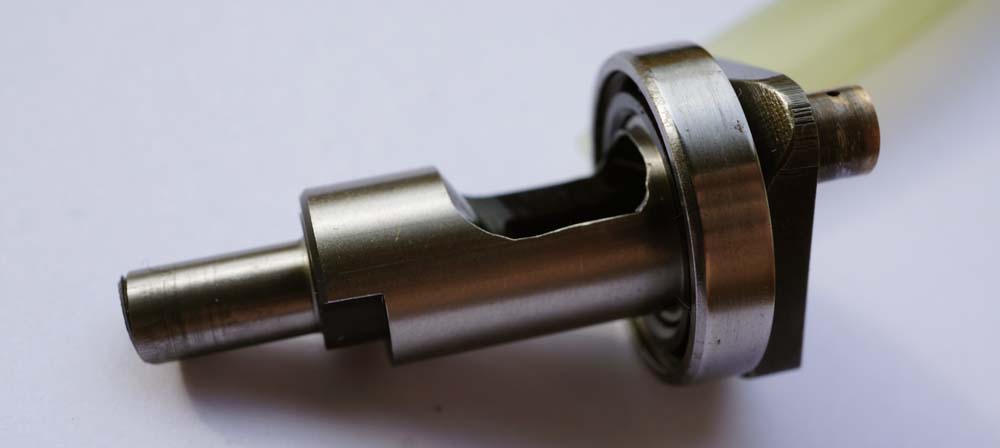 The crankshaft broke up in the air. For a couple of seconds the engine kept running at very high speed 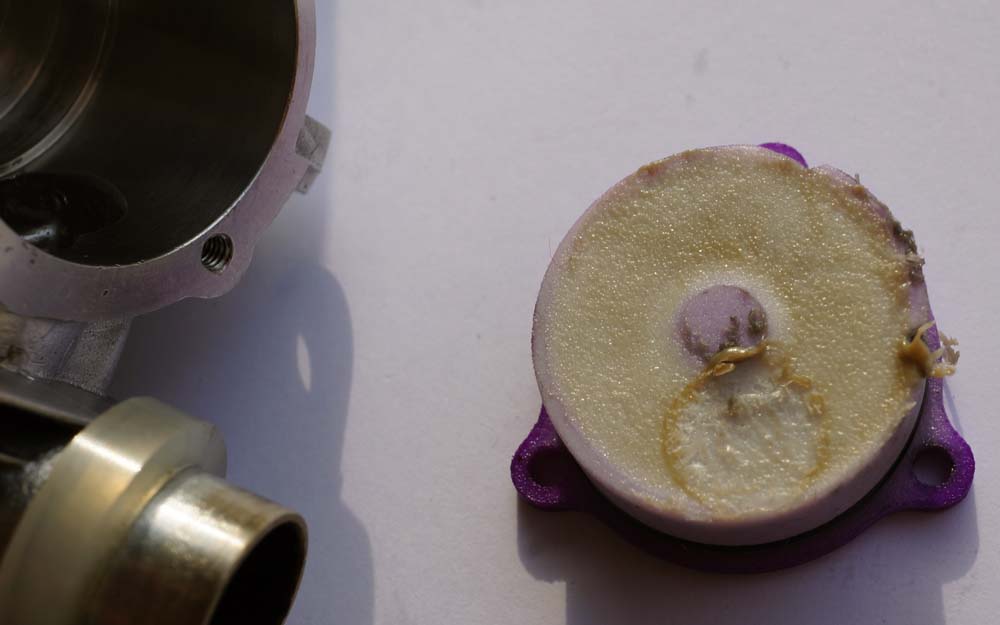 Without the prop driver to hold the crankshaft in position it moved backwards and the made contact with the plastic back plate 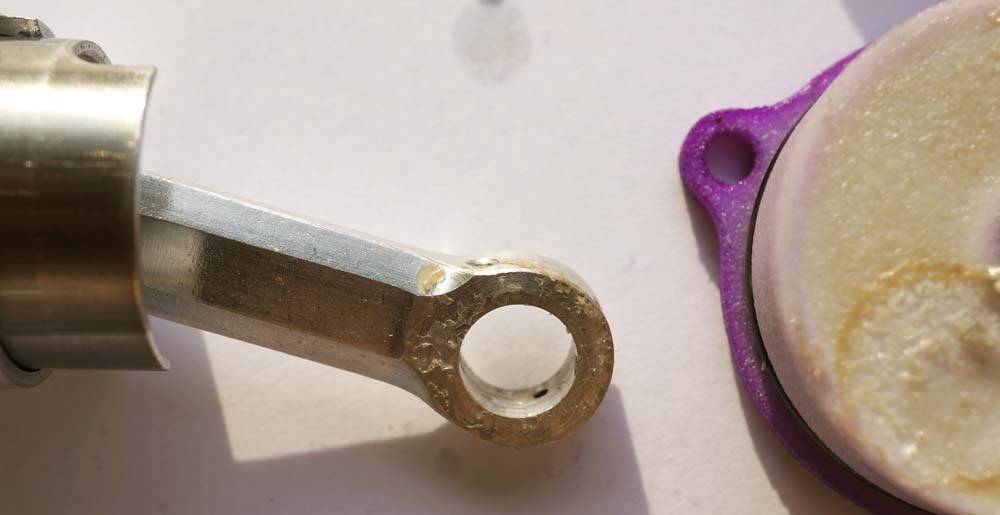 The lower end of the connection rod melted a good deal of the back plate 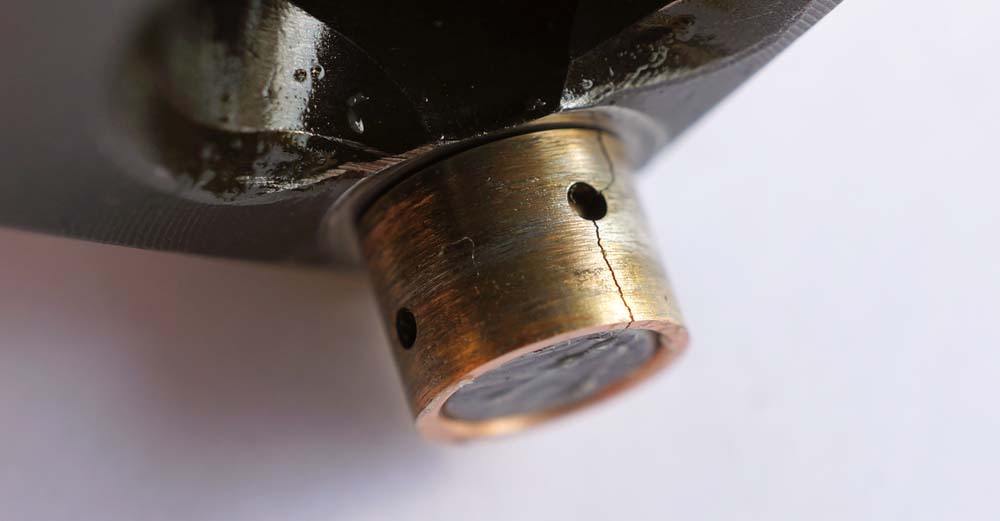 The bronze bearing from the connection rod weld to the crank pin. The crankshaft was covered with a thin layer of plastic 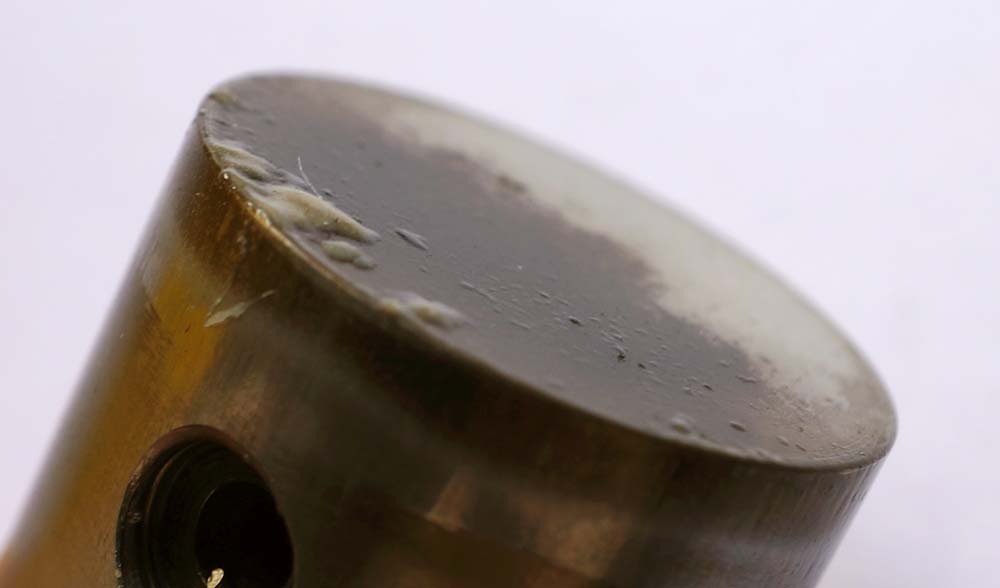 Small drops of melted plastic was found on the top of the piston 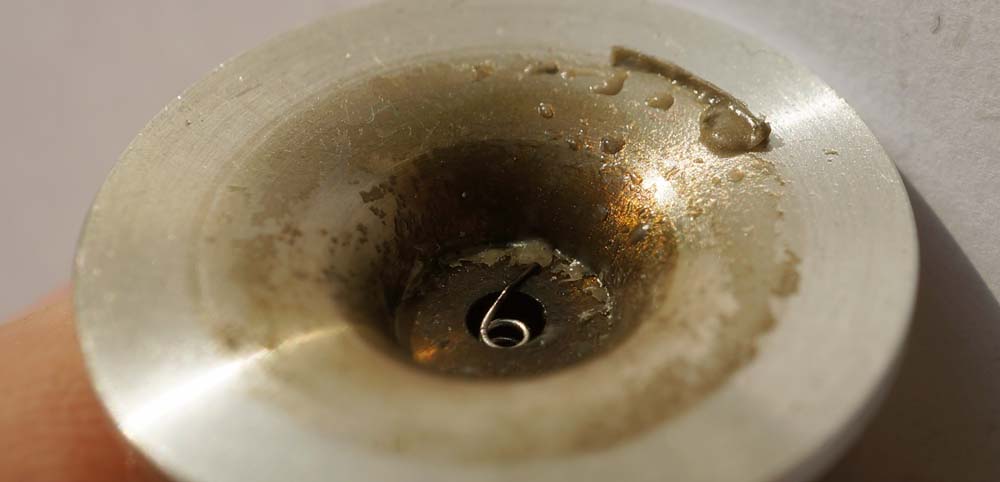 Head and glow plug also had a lot of molten plastic 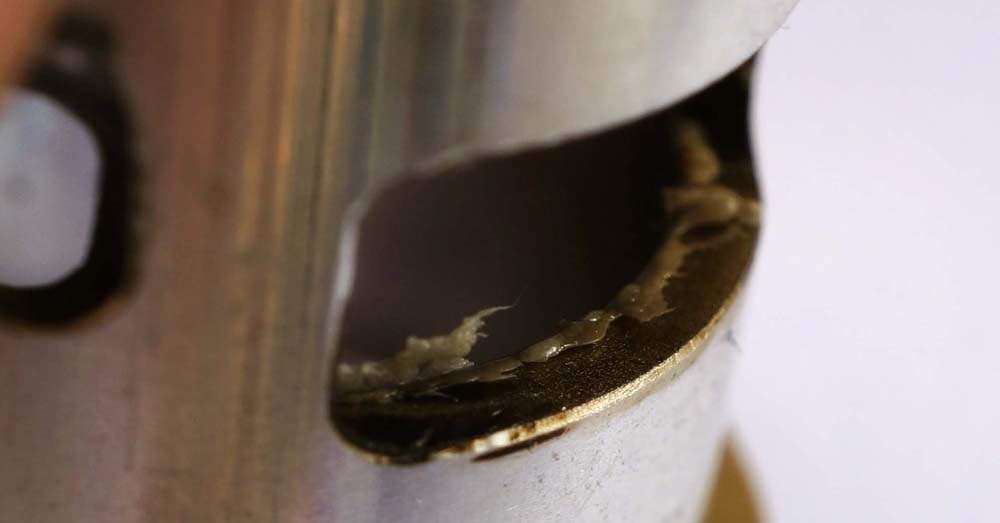 Plastic in the exhaust port 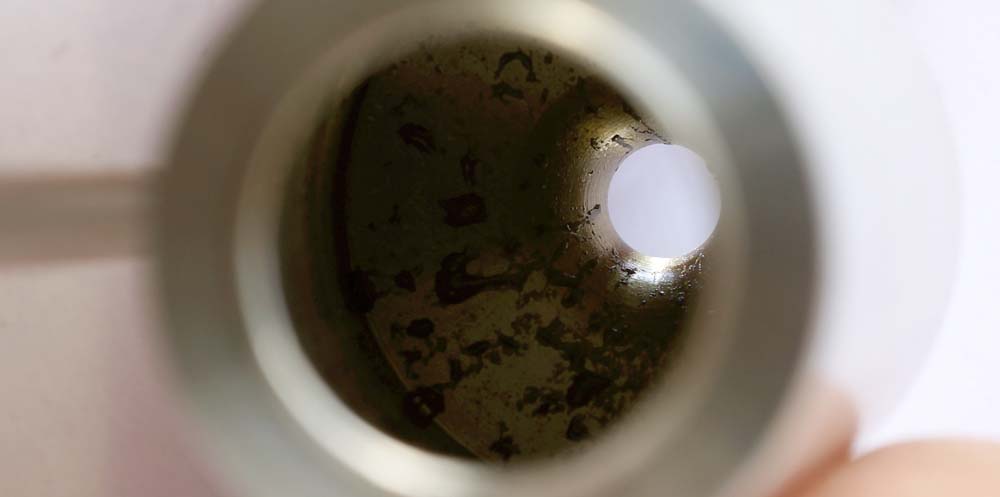 Plastic inside the muffler. This plastic went all the way through the engine 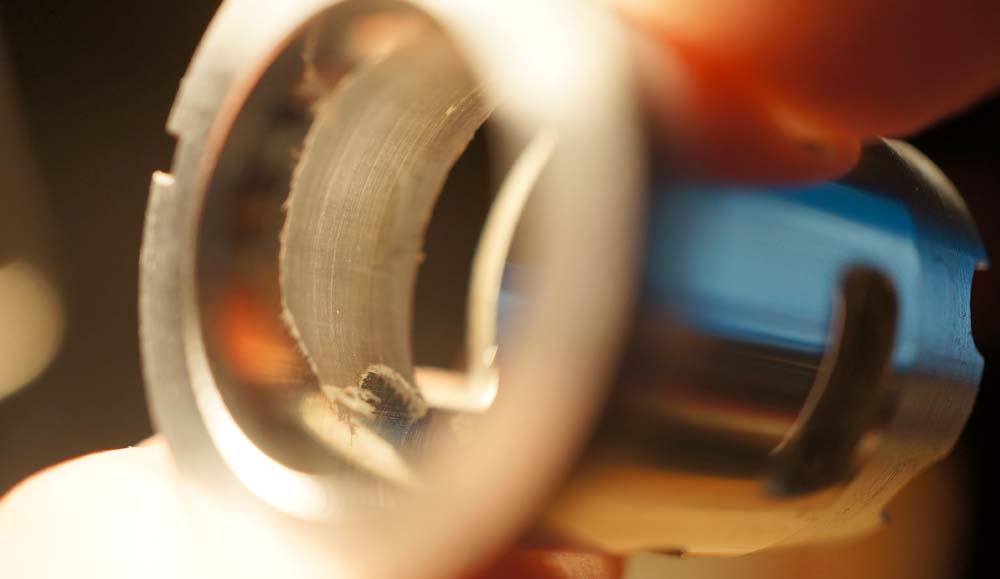 There was even a thin plastic film on the inside of the cylinder. This plastic must have been liquid when the engine was running. There were no marks to be found on the piston from this plastic film |
||
|
After cleaning the engine was set up with a new crankshaft and a new connection rod.
The piston and cylinder did not have any damages from the test and was reinstalled in the engine.
Of cause melted plastic back plate was replaced by a new plastic back plate.
After this repair I have been using this engine together with my other "Super Fora" for a lot of World Cup competitions this year. I have not been able to notice any difference in performance between the two engines (but they are faster than my older engines). After this hard core test of the plastic back plate my conclusion is clear: One may even argue that the plastic back plate helped to slow down this engine when it was spinning up without a propeller. With the classic aluminium back plate the engine may have self-destruct in the ultra-high RPMs. Bits of aluminium and chrome from an old fashion back plate could also have spoiled the piston and cylinder. Henning Forbech, April Fools' Day, 2016 |
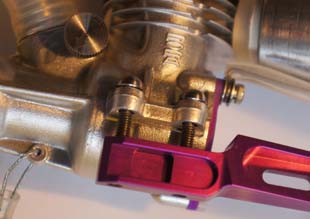 New plastic back plate and the engine are ready to fly again |
|
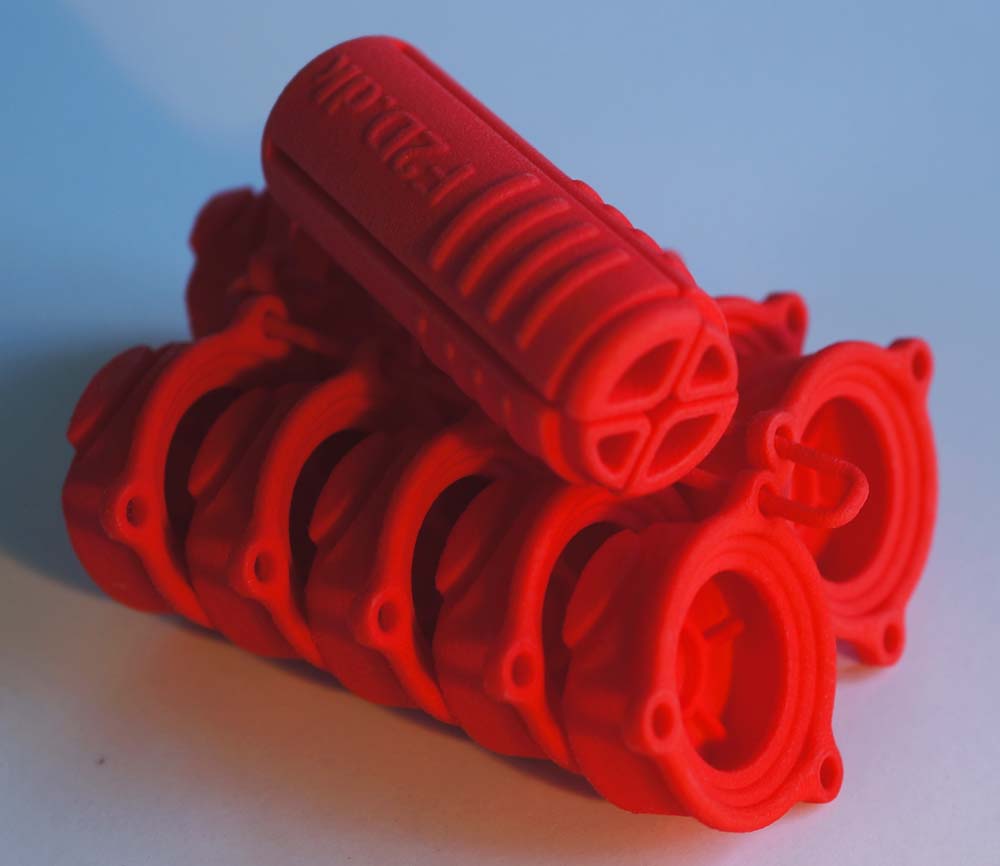 Ready to update your engines? |
||
|
|
||
|
Is plastic screws dangerous to the engine? First published: 23/4 2016 - By Henning Forbech The plastic back plate is mounted with plastic screws instead of the traditional steel screws. Often the fear is that the plastic screws should came lose and the back plate should start to move out of the crankcase when the engine is running. If this should happend the piston shirts at one moment will hit the back plate. With an aluminium back plate this would result in a castrophere where the piston brake up and moste likely spoil the cylinder sleeve. It is correct the plastic screews are more delicate to operate than traditional steel screews. You must be very carfull not to overtighten the plasti screews and the nessasery tork is very low. To see if a moving platic back plate is dangerus to the engine I made a test! As you see on this photo the piston have hit the back plate and damagede the plastic. But the piston had no damage! The plastic screws may be a little difacult to use but a moving back plate will not damage your engine |
Billede af plast skruer You will save 0.8 grams by replasing the steel screws by plastic strews You can get the plastic screws here: RS Components: 527-943 |
|
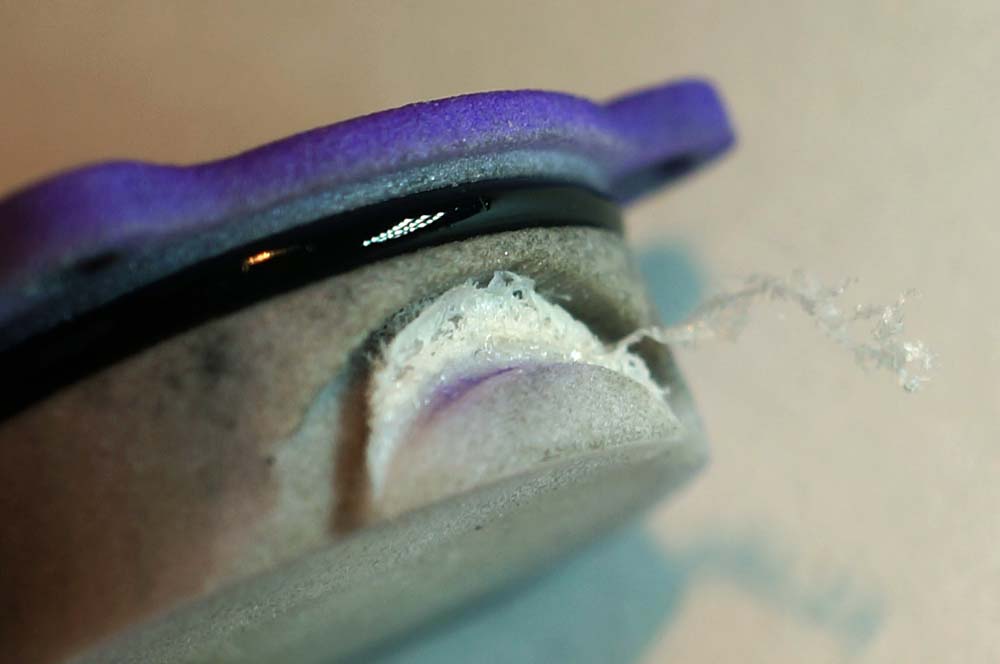 Plastic back plate after contact with the piston |
||
|
Looking back: Plastic back plates for combat engines is not an new idea. Back in 1980 Bjarne Schou produced a series of plastic back plates for the popular Super Tiger G20/15. Back then the Super Tiger G20/15 was the engine used by most pilots. Similar to the status of FORA engine today. Also then the weight was an issue. One way to bring down the total weight of the model was to replace the original aluminium back plate with one made from injection moulded plastic. |
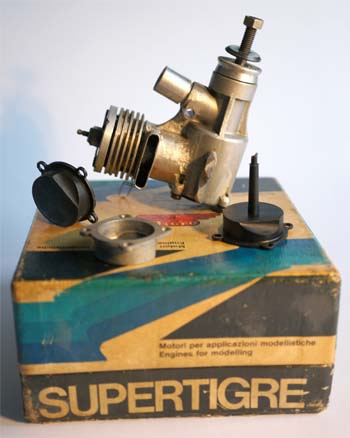
|
|
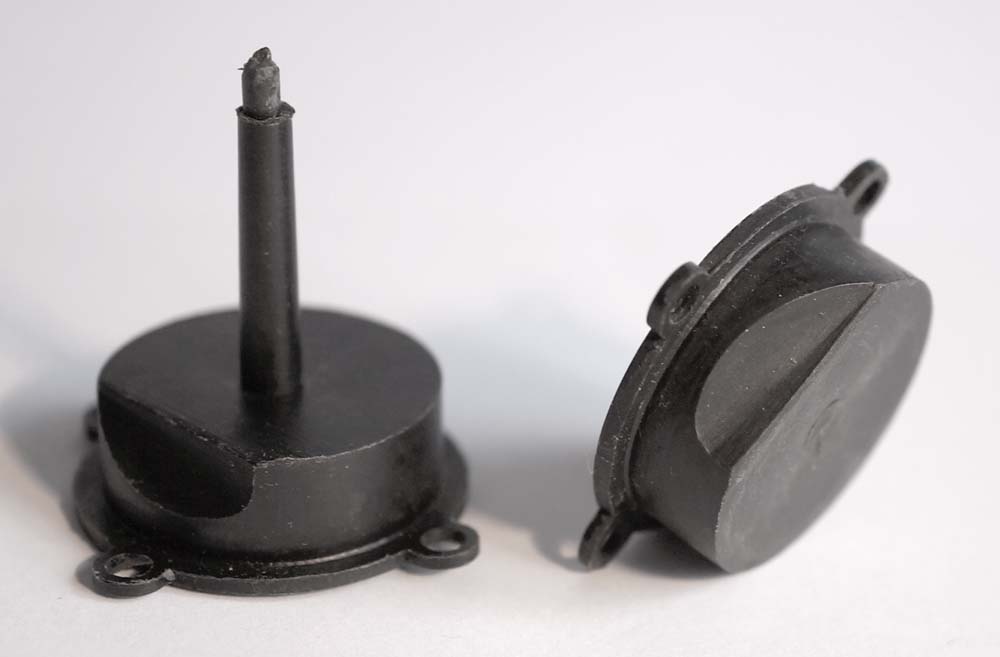 Injection molded back plates for the Super Tiger G20/15 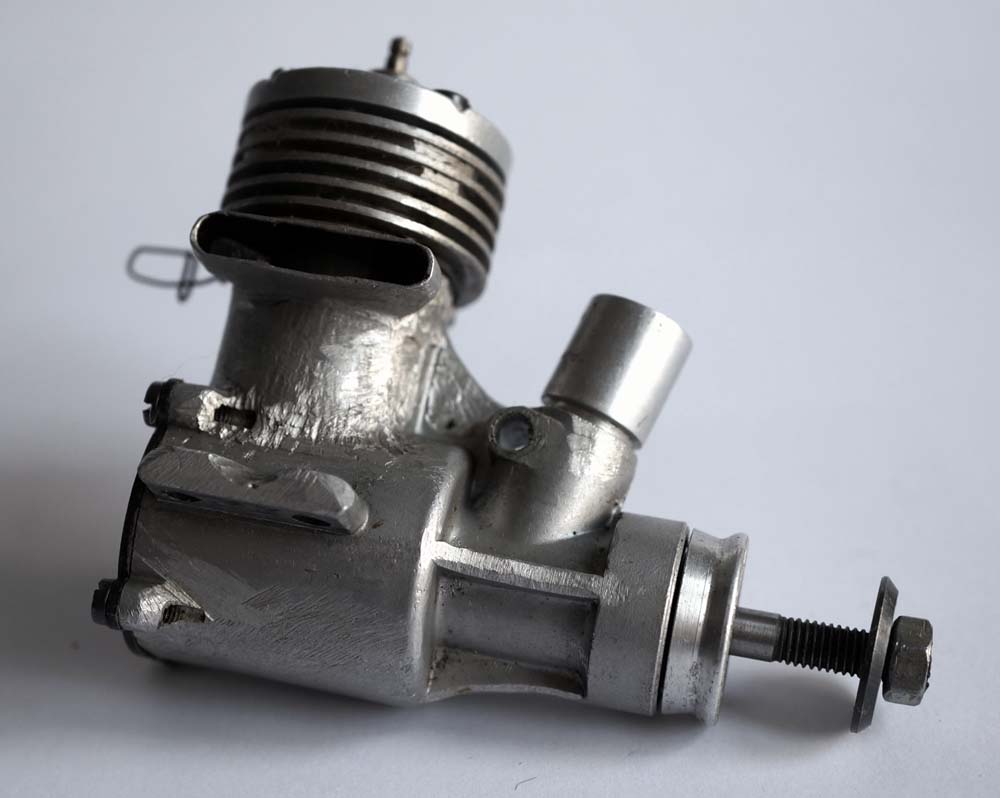
|
||
|
Back in the 80ties we also found other ways to reduce weight. Not looking so nice but very effective. Combat is not a beauty contest! Right: Bjarne Schou at the 1982 Limfjords Competition, Aalborg, Denmark. In the background: Ingemar Larsson |
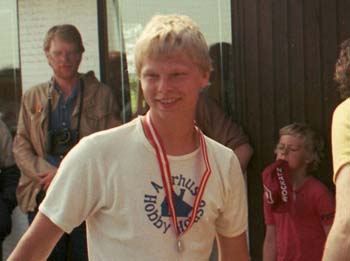
|
|
|
|
||
|
Permalink:
https://www.f2d.dk/equipment/engine/backplate.htm
- Public domain -
Spell checking doc
|
||